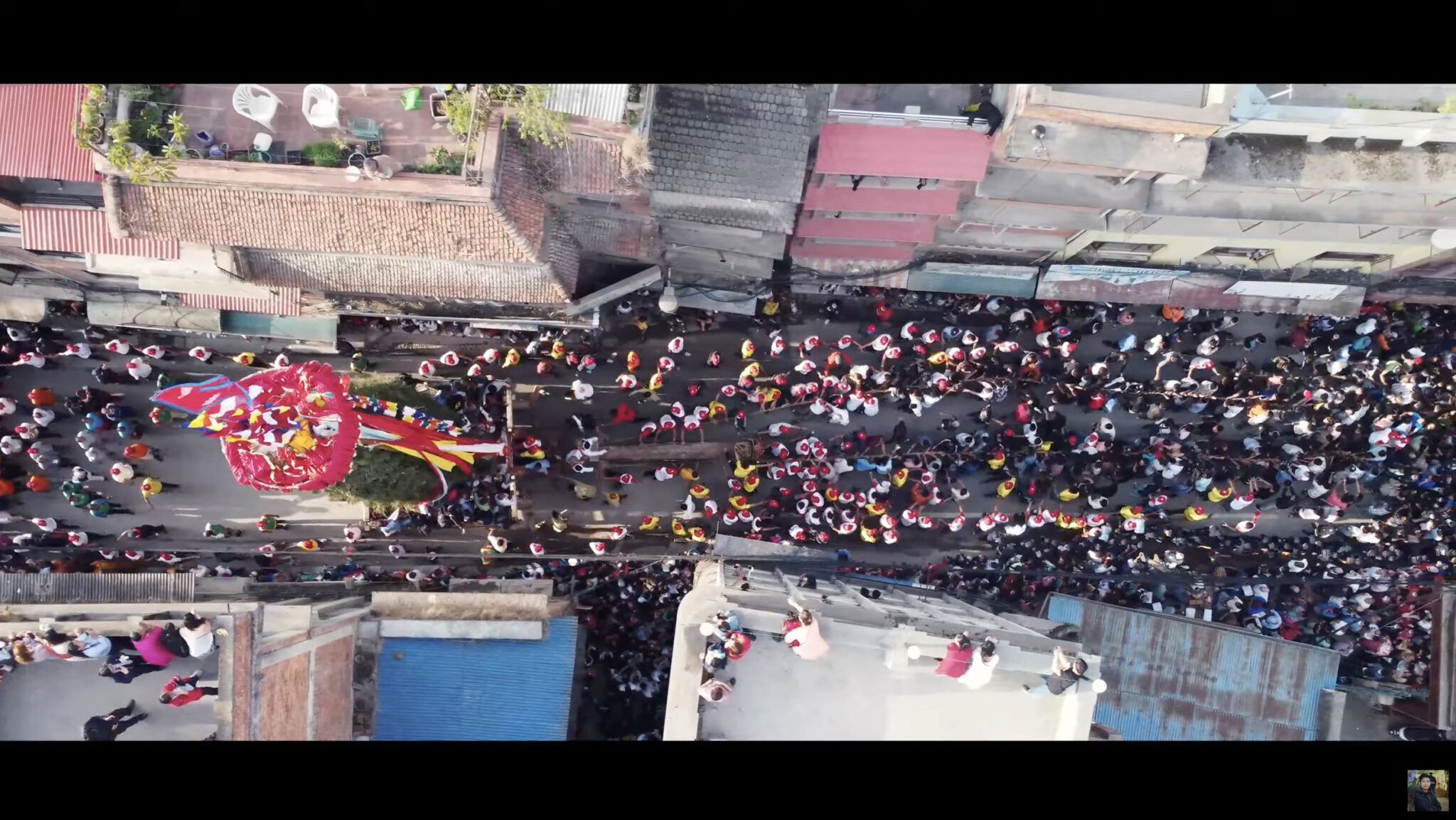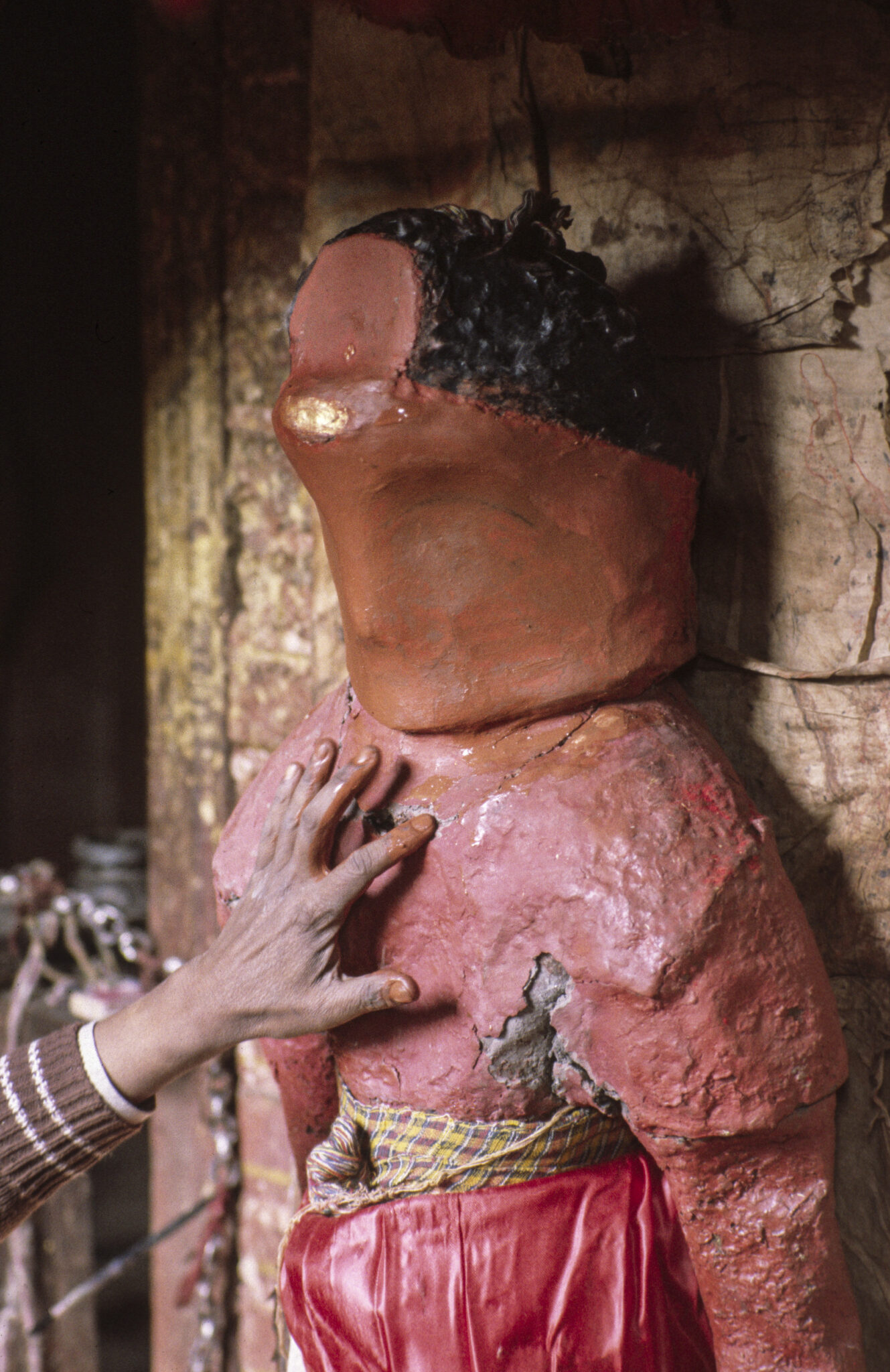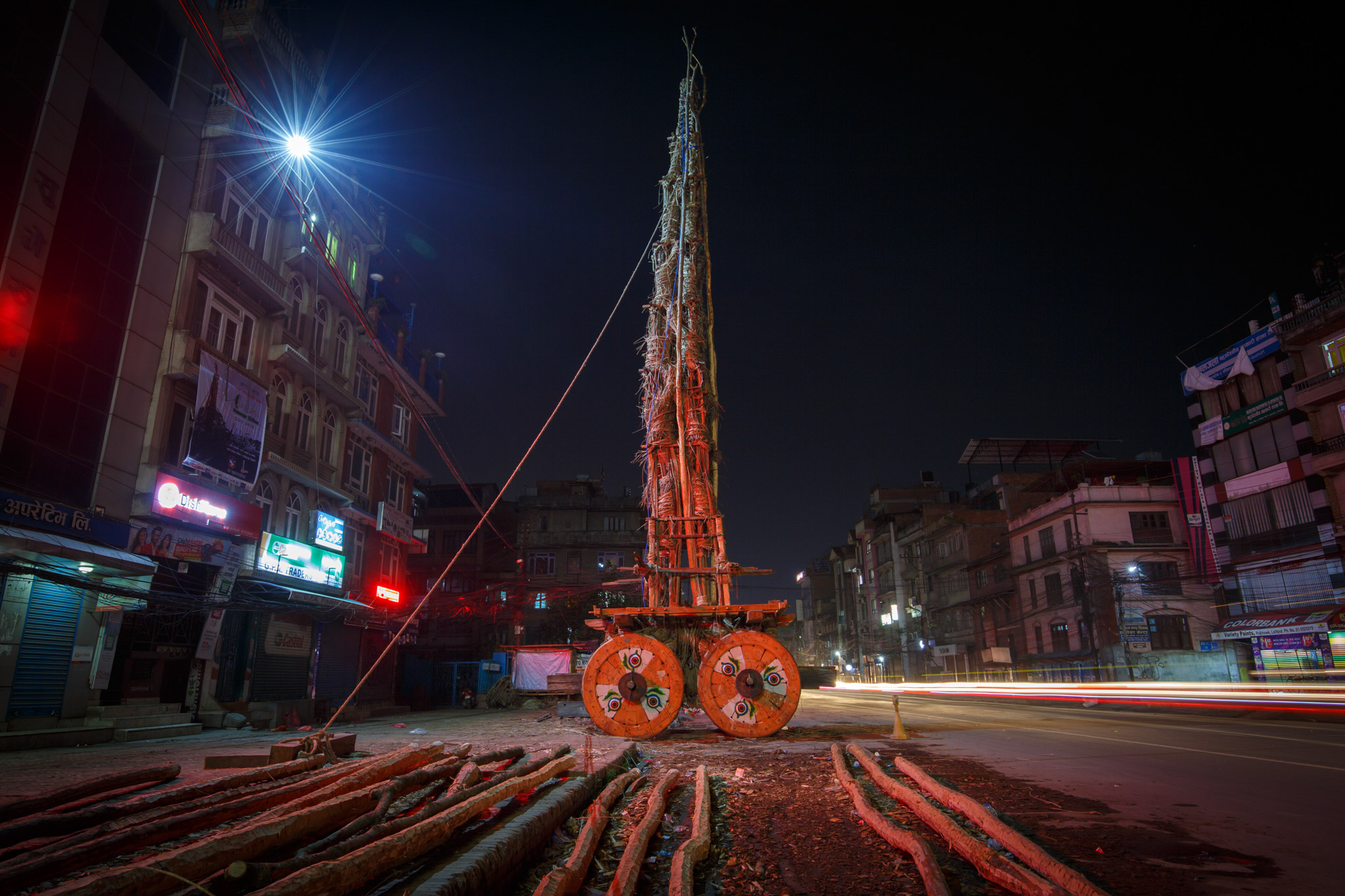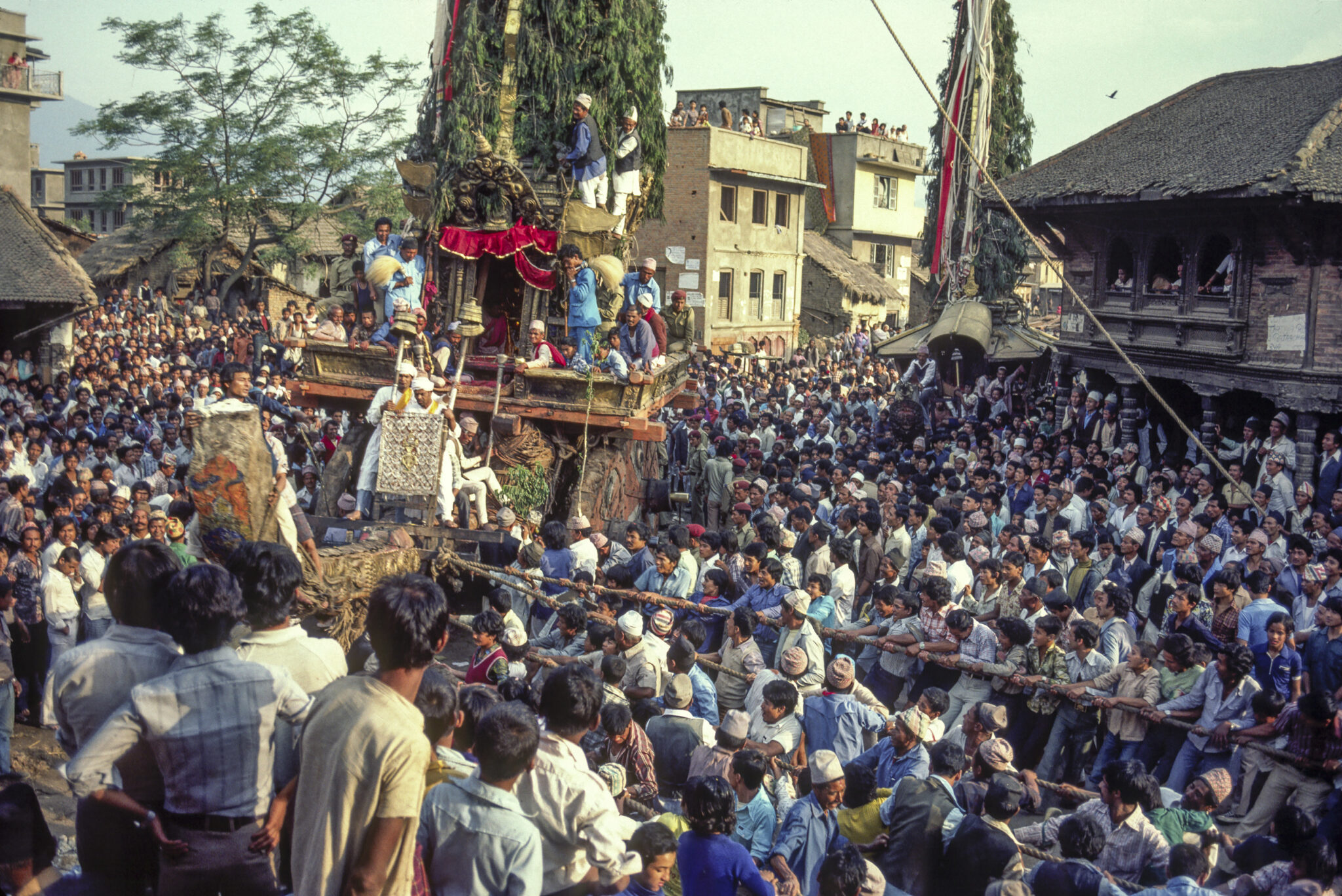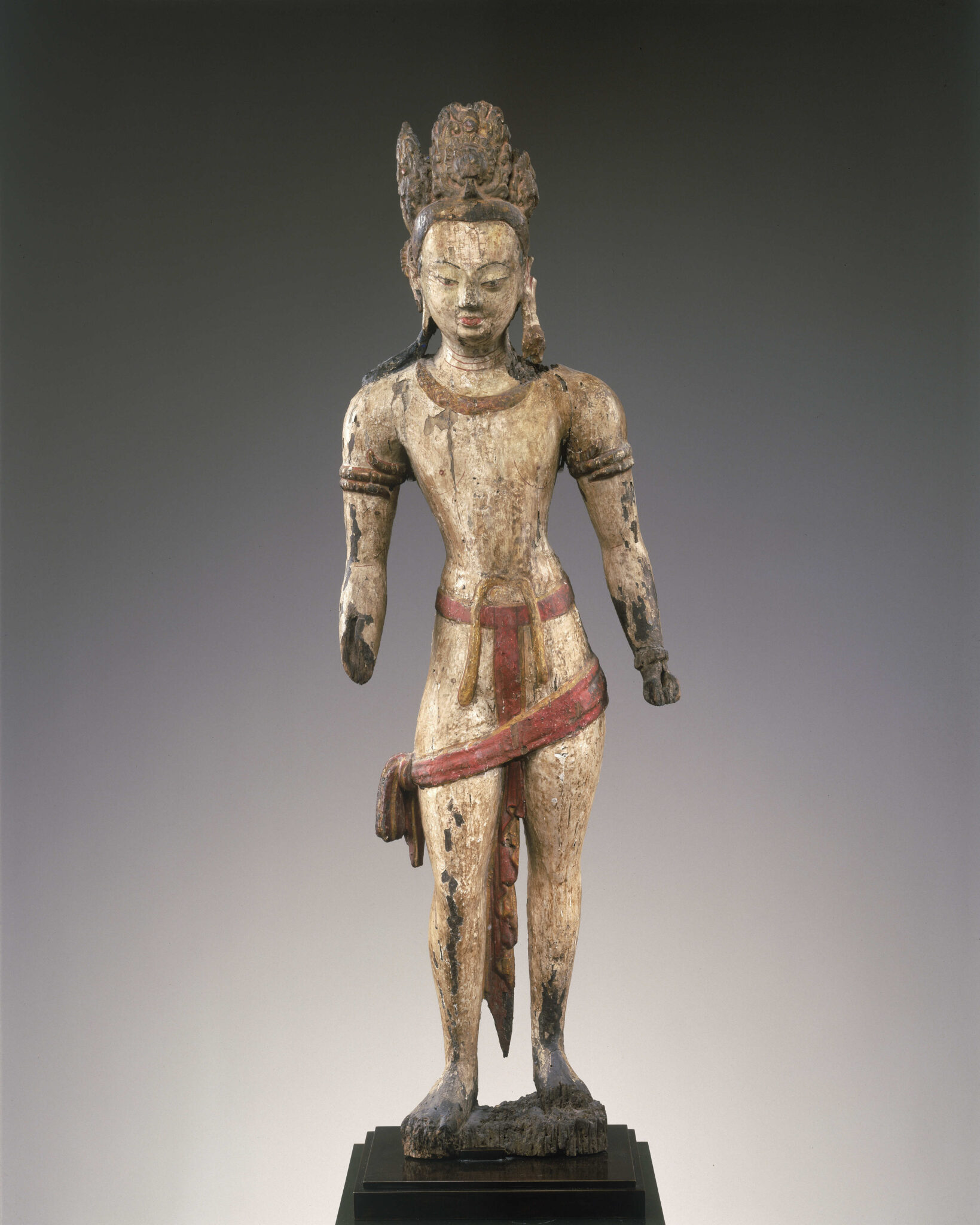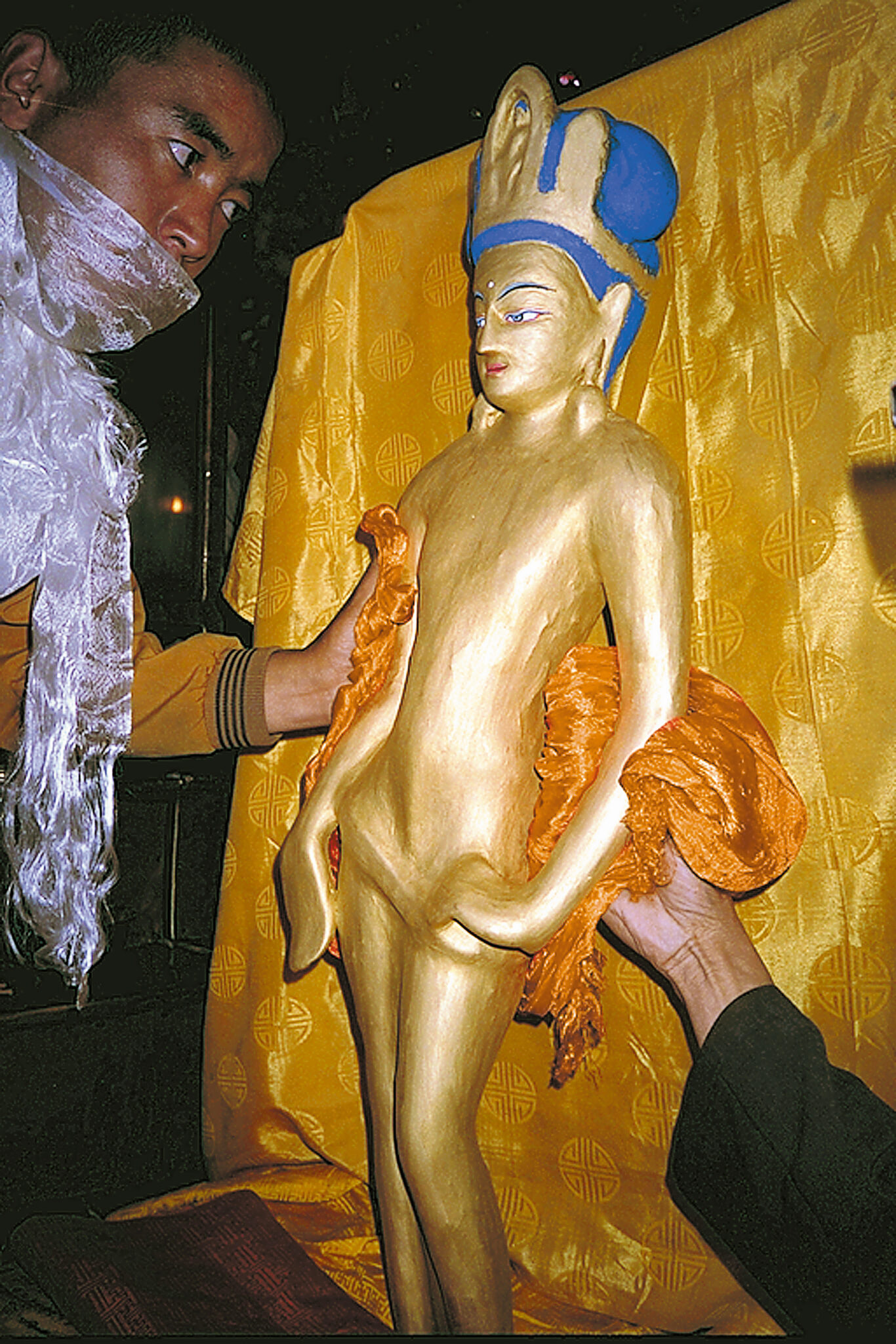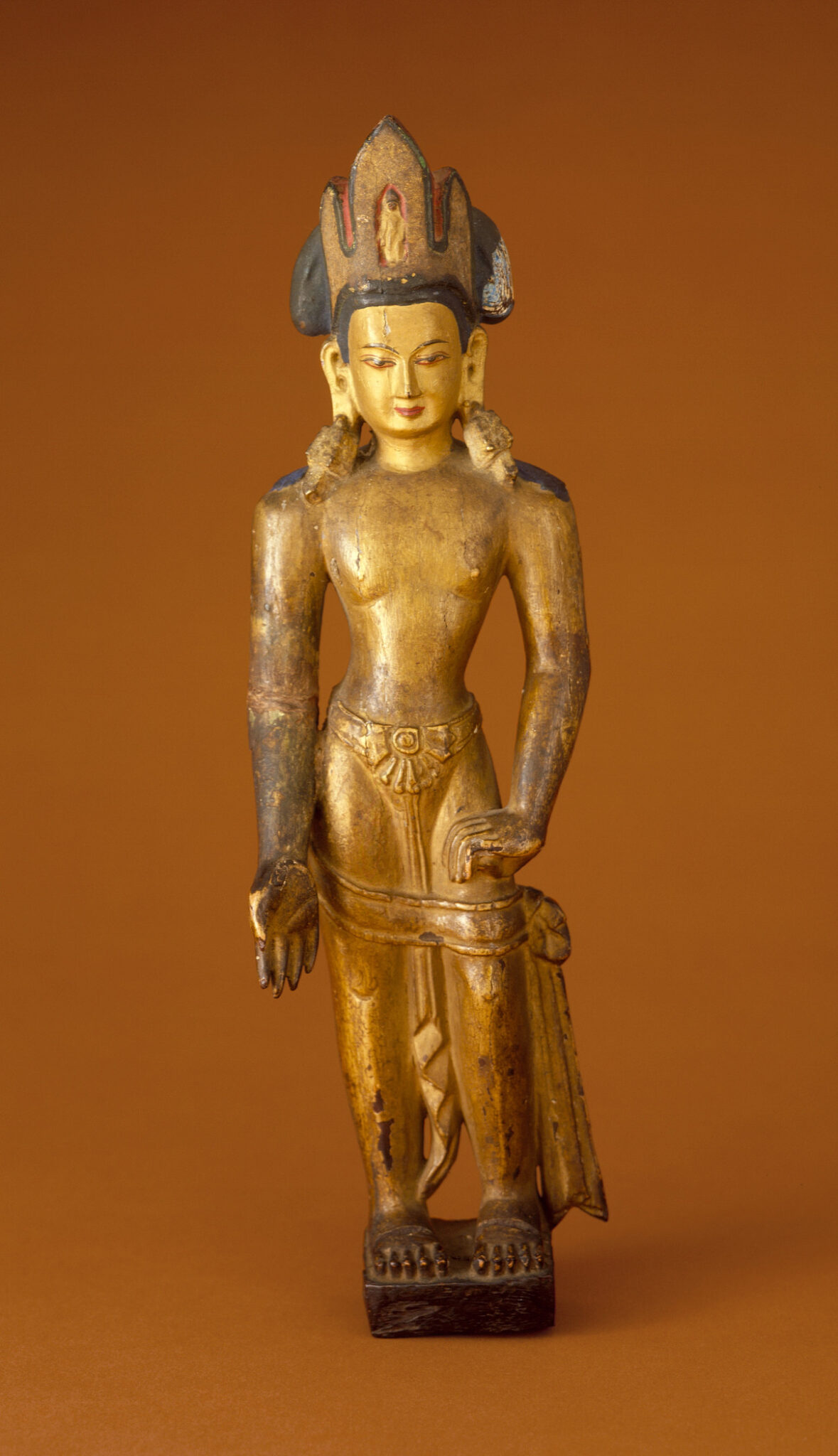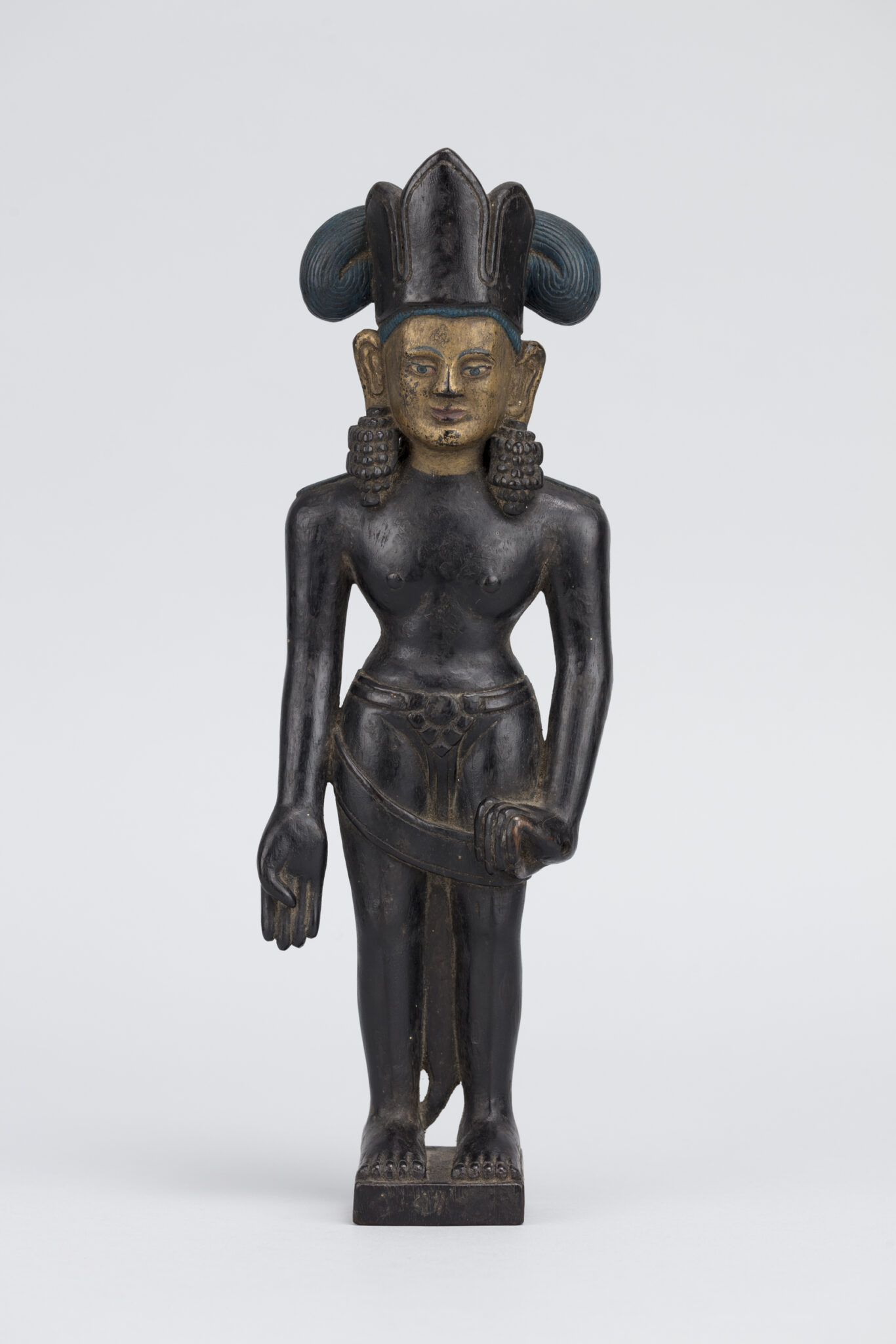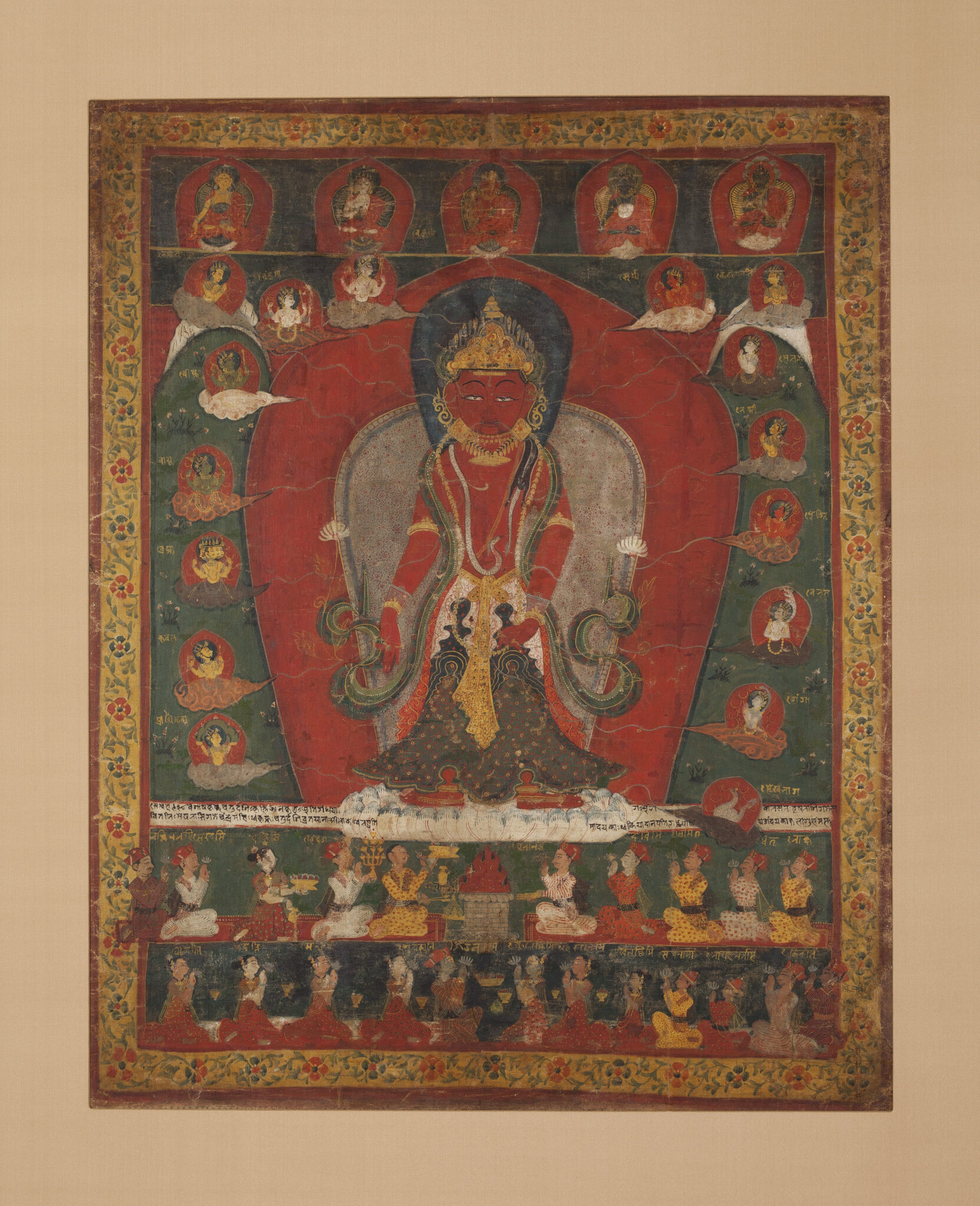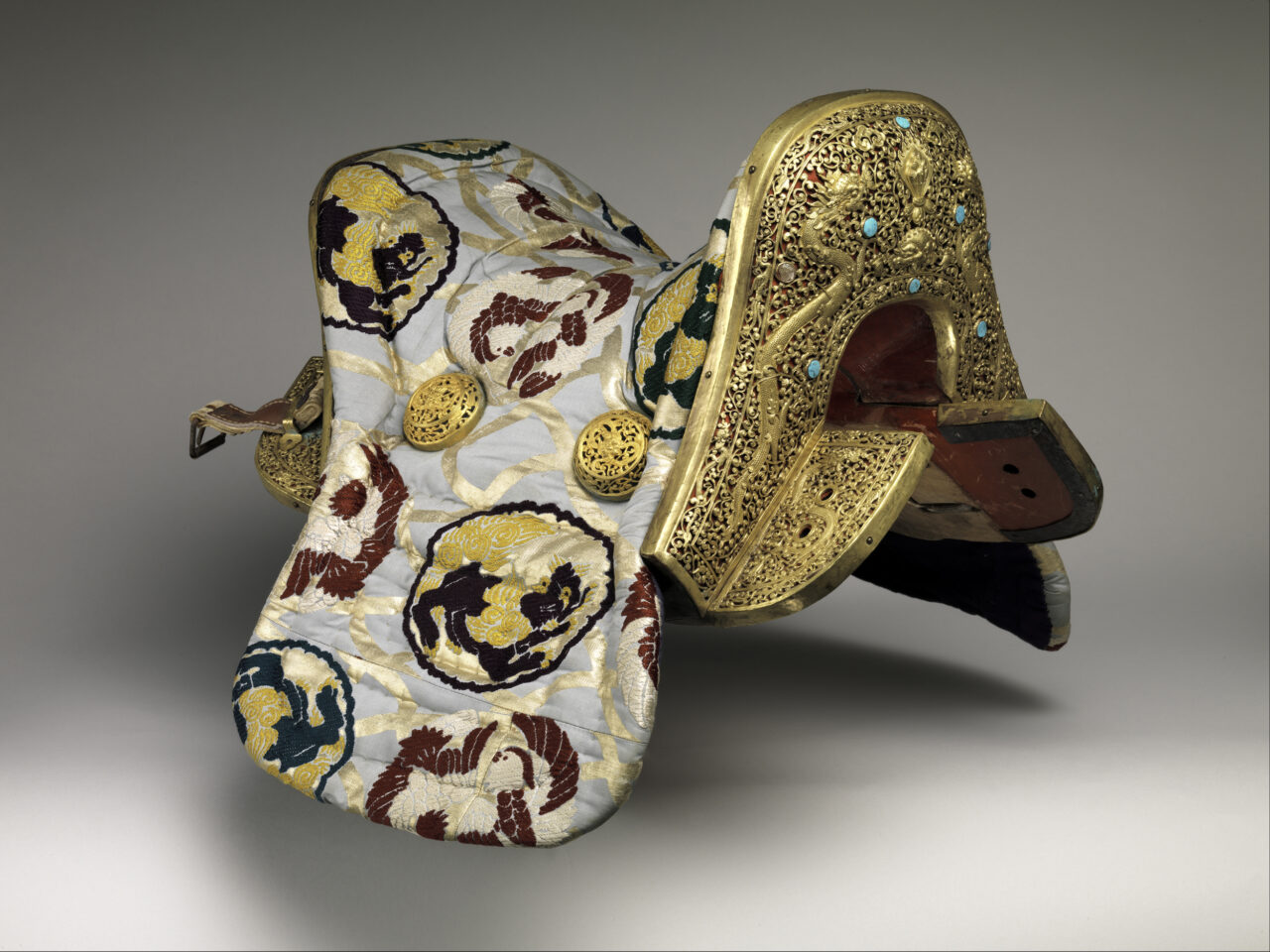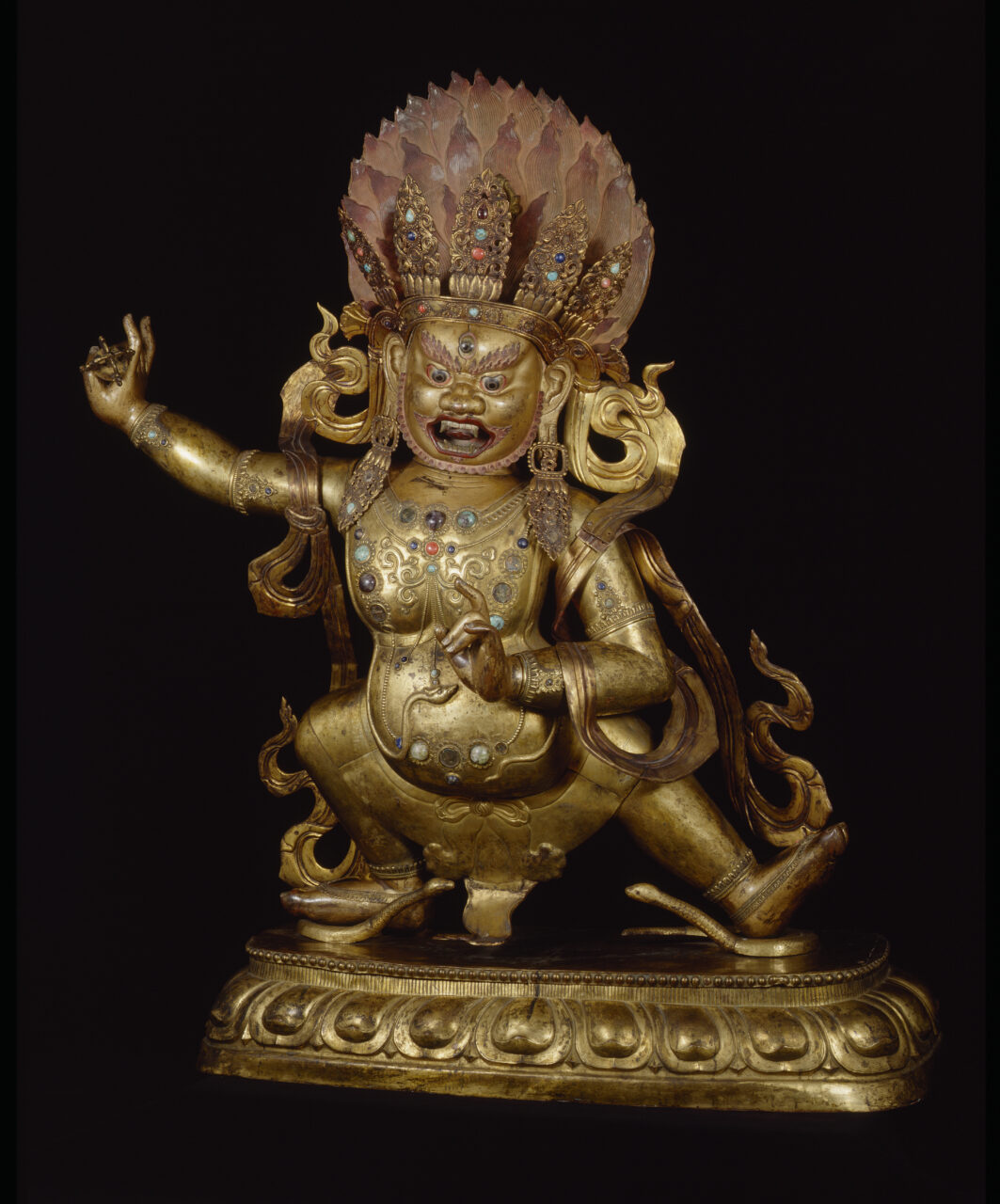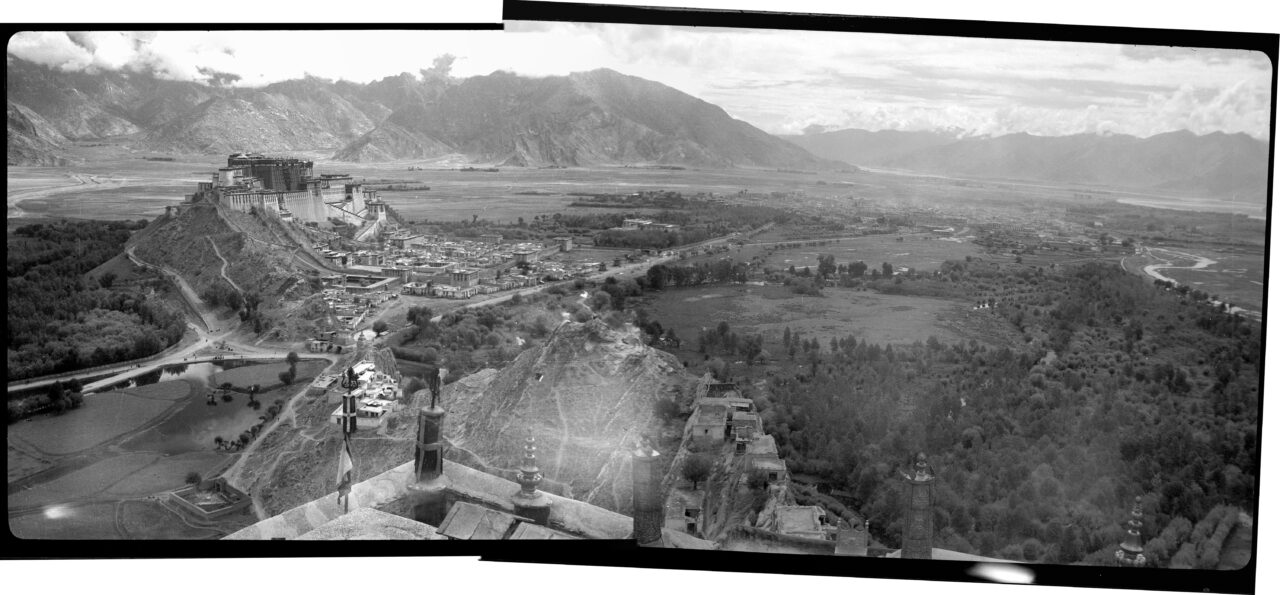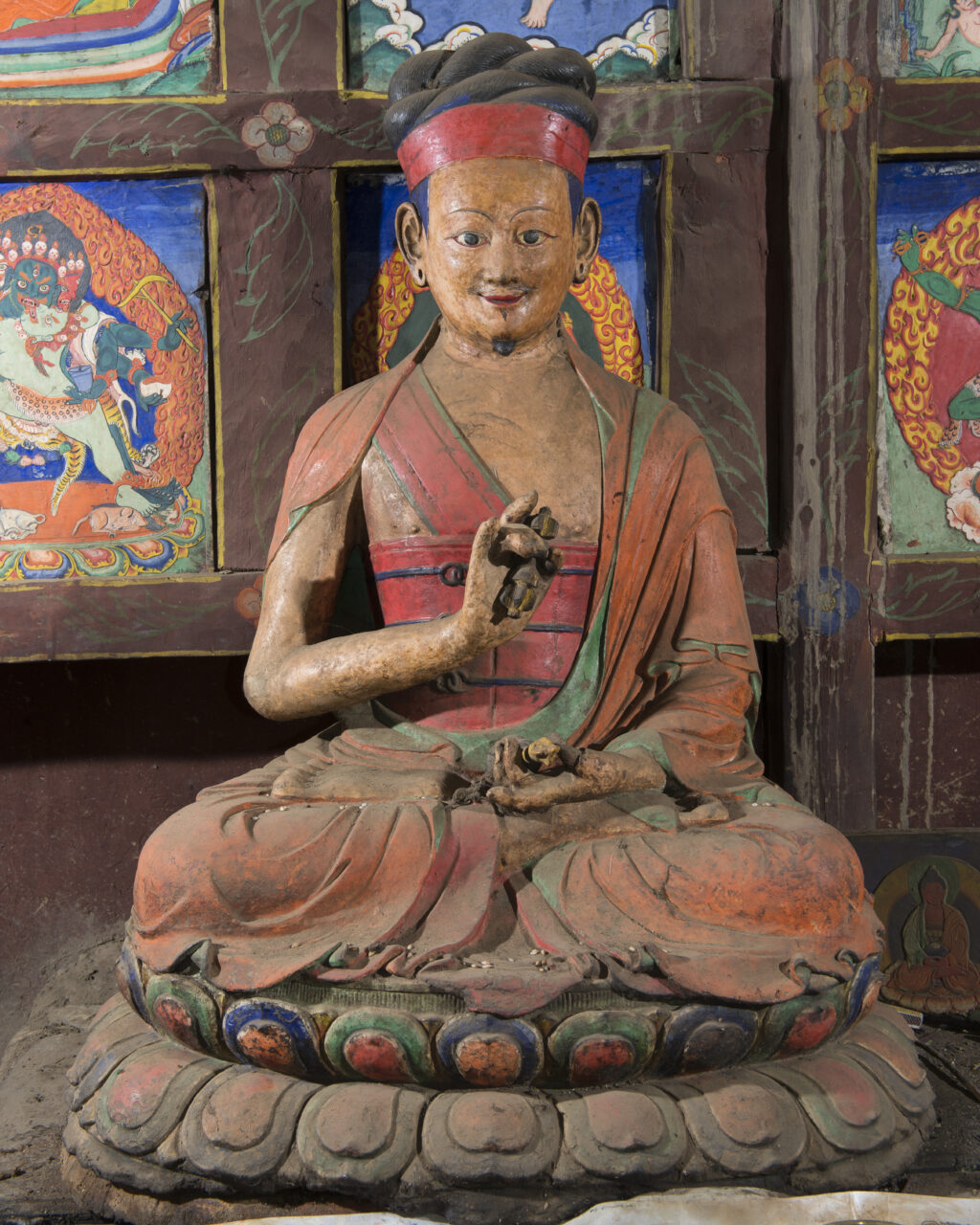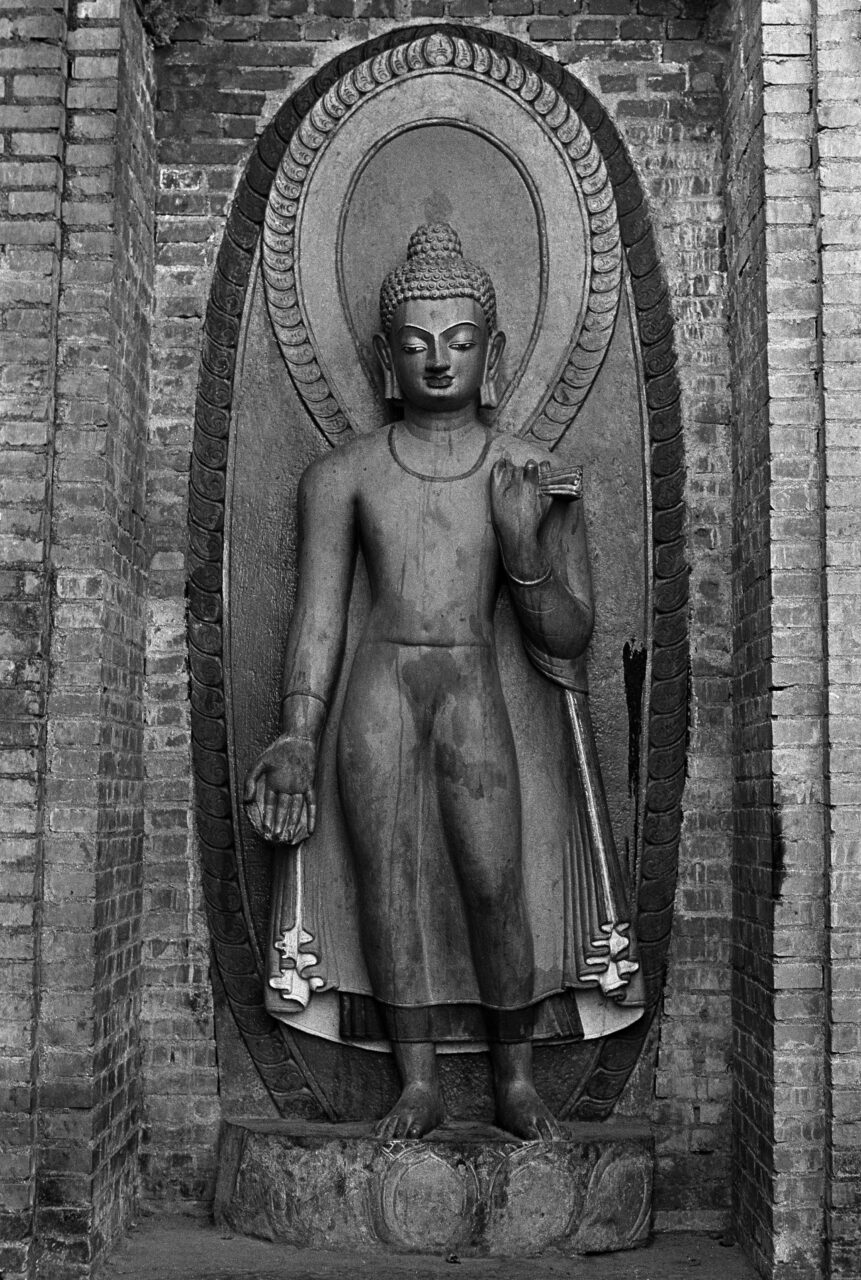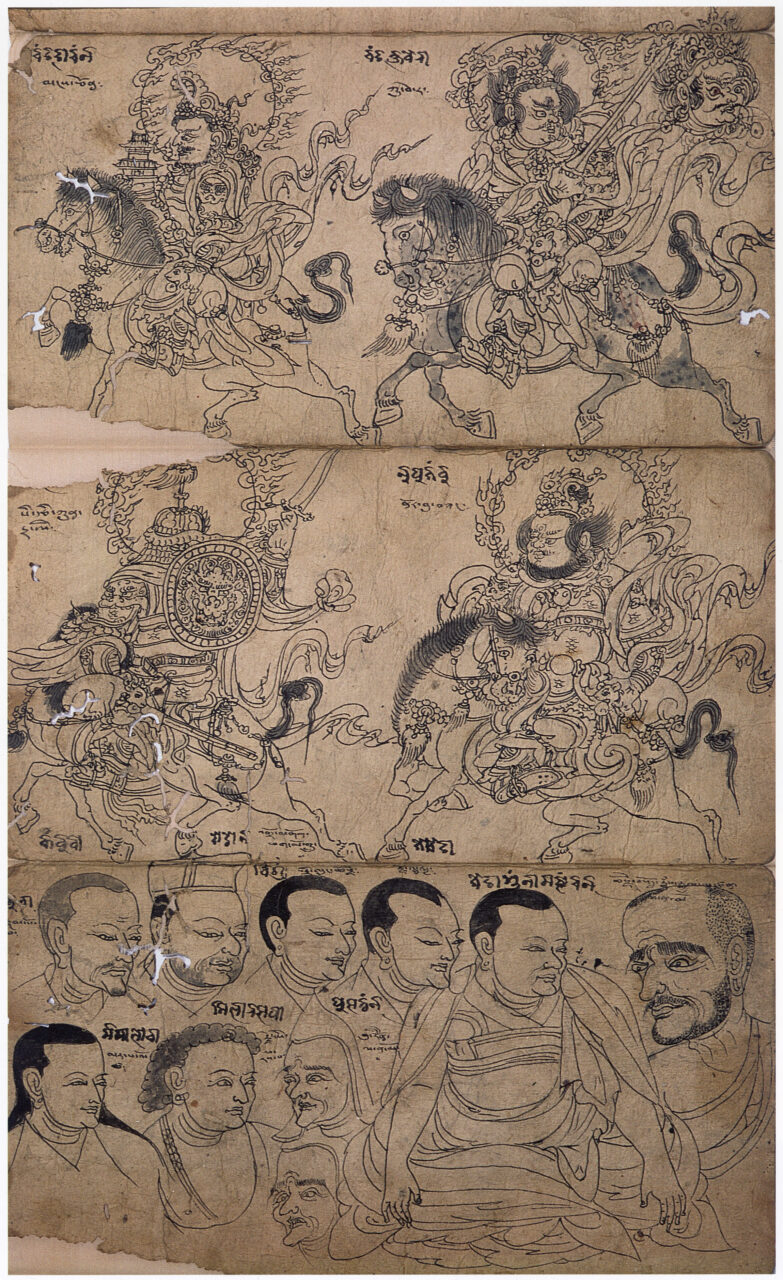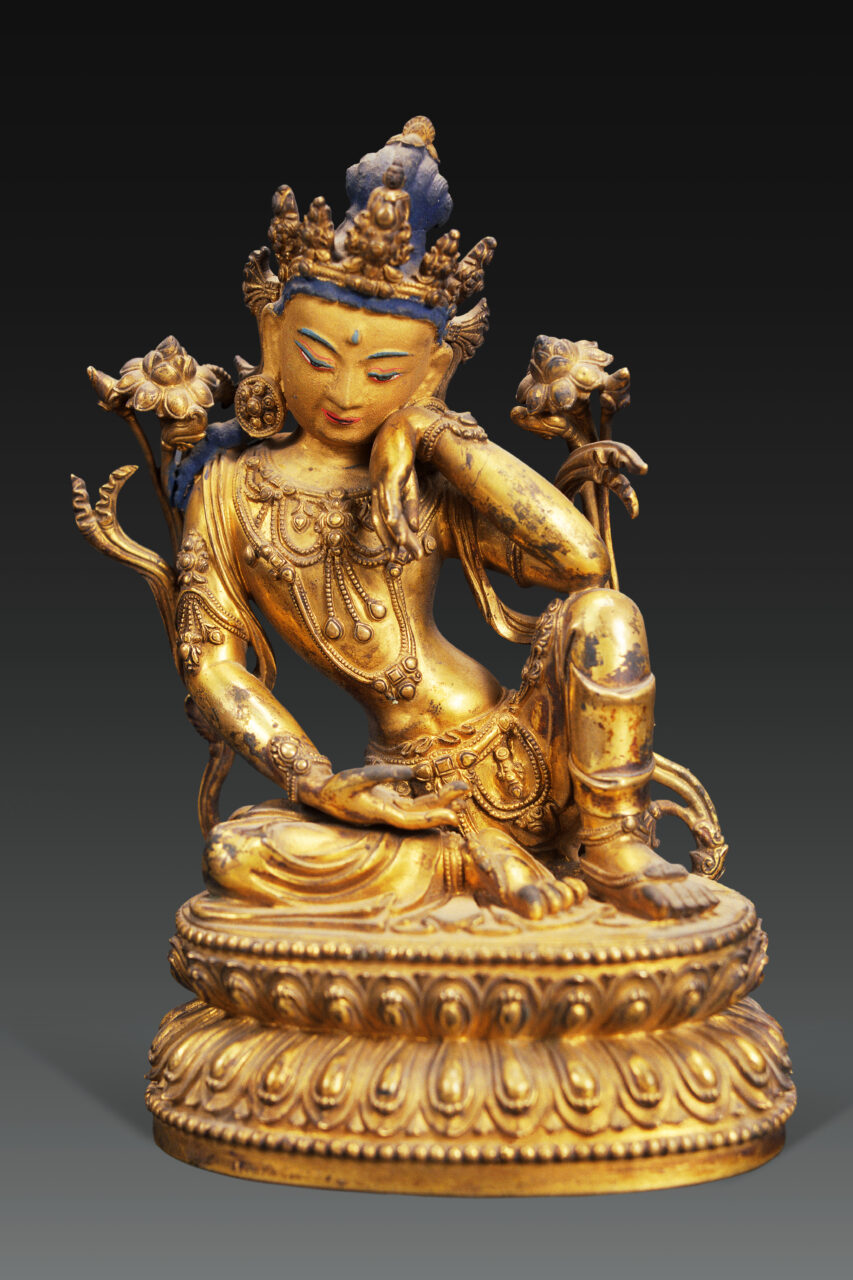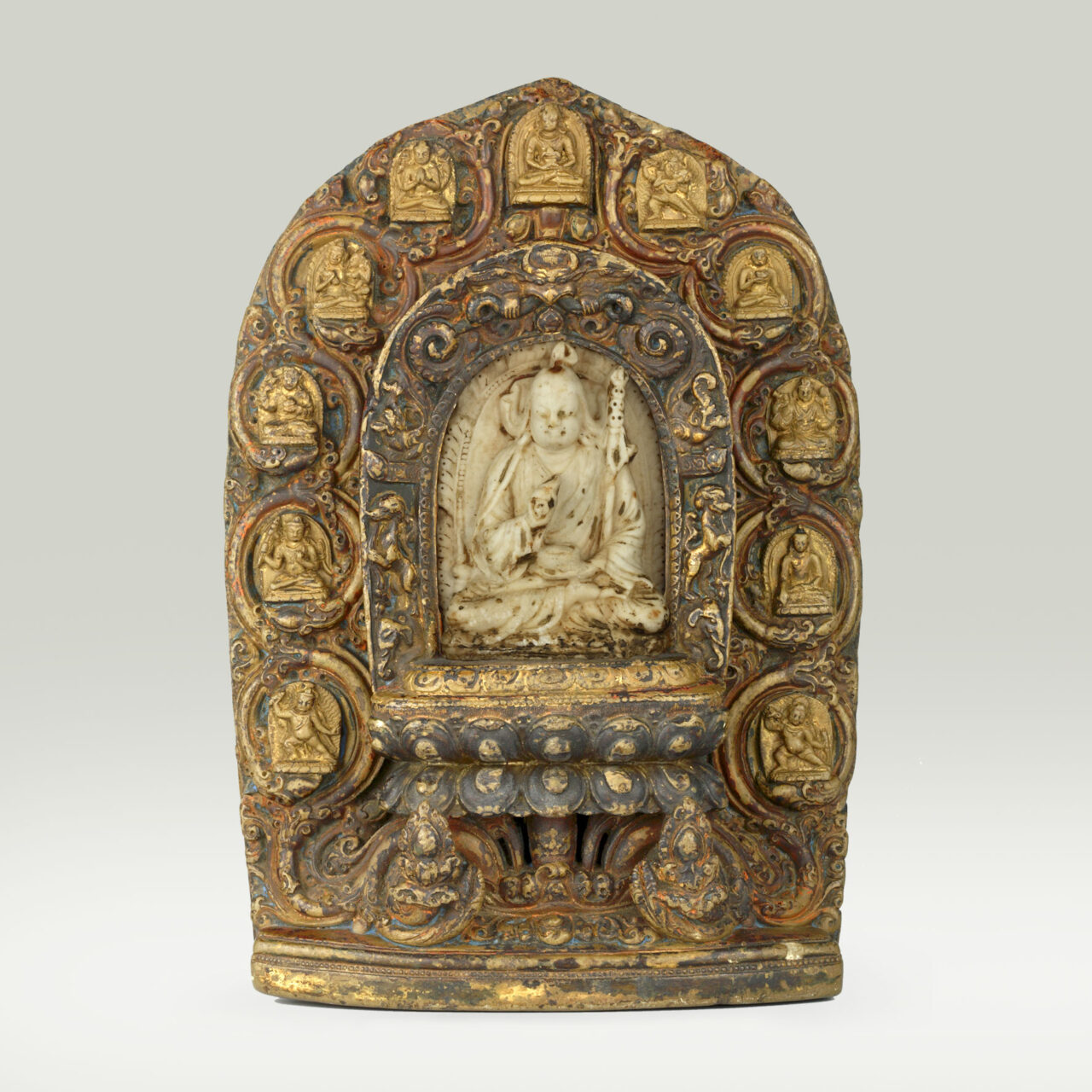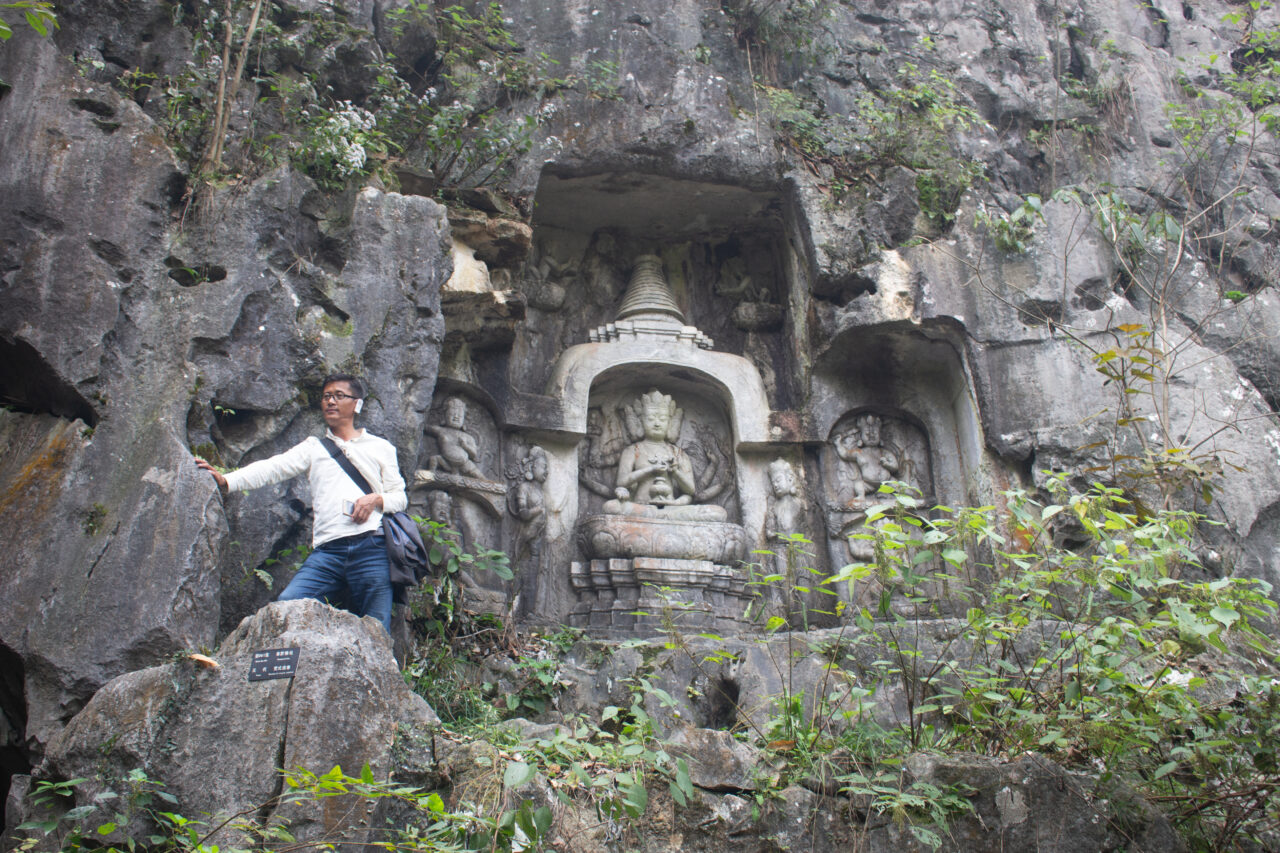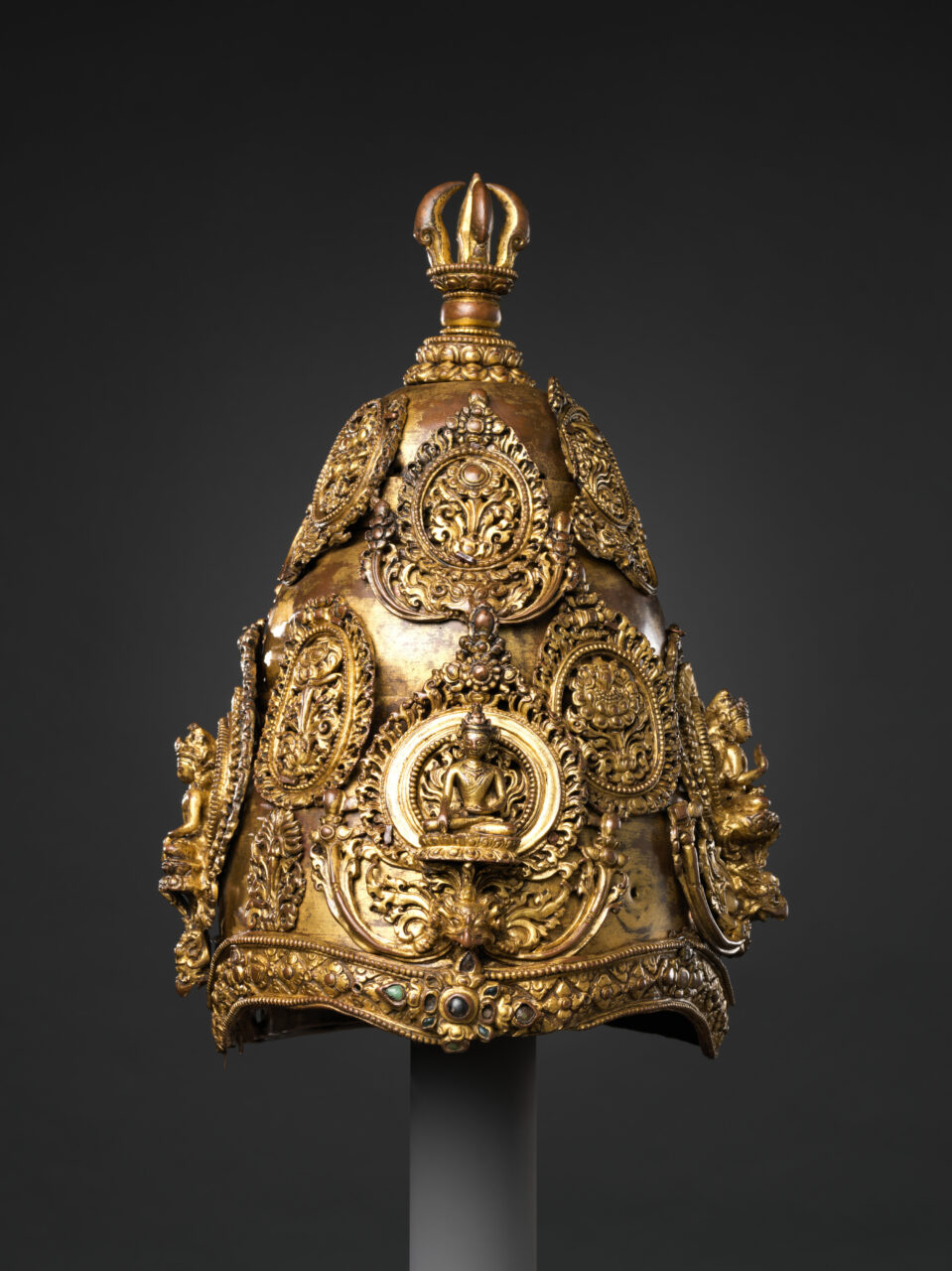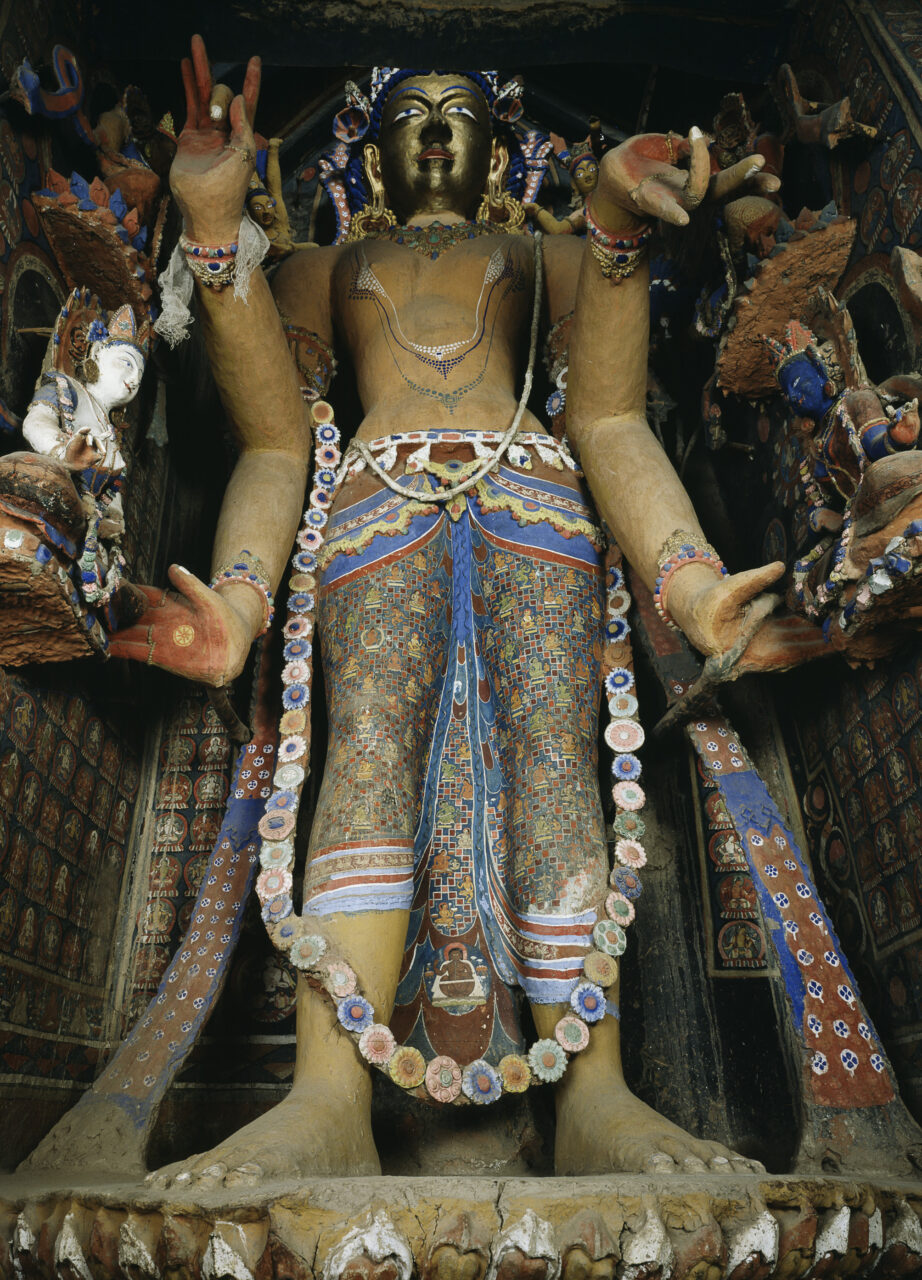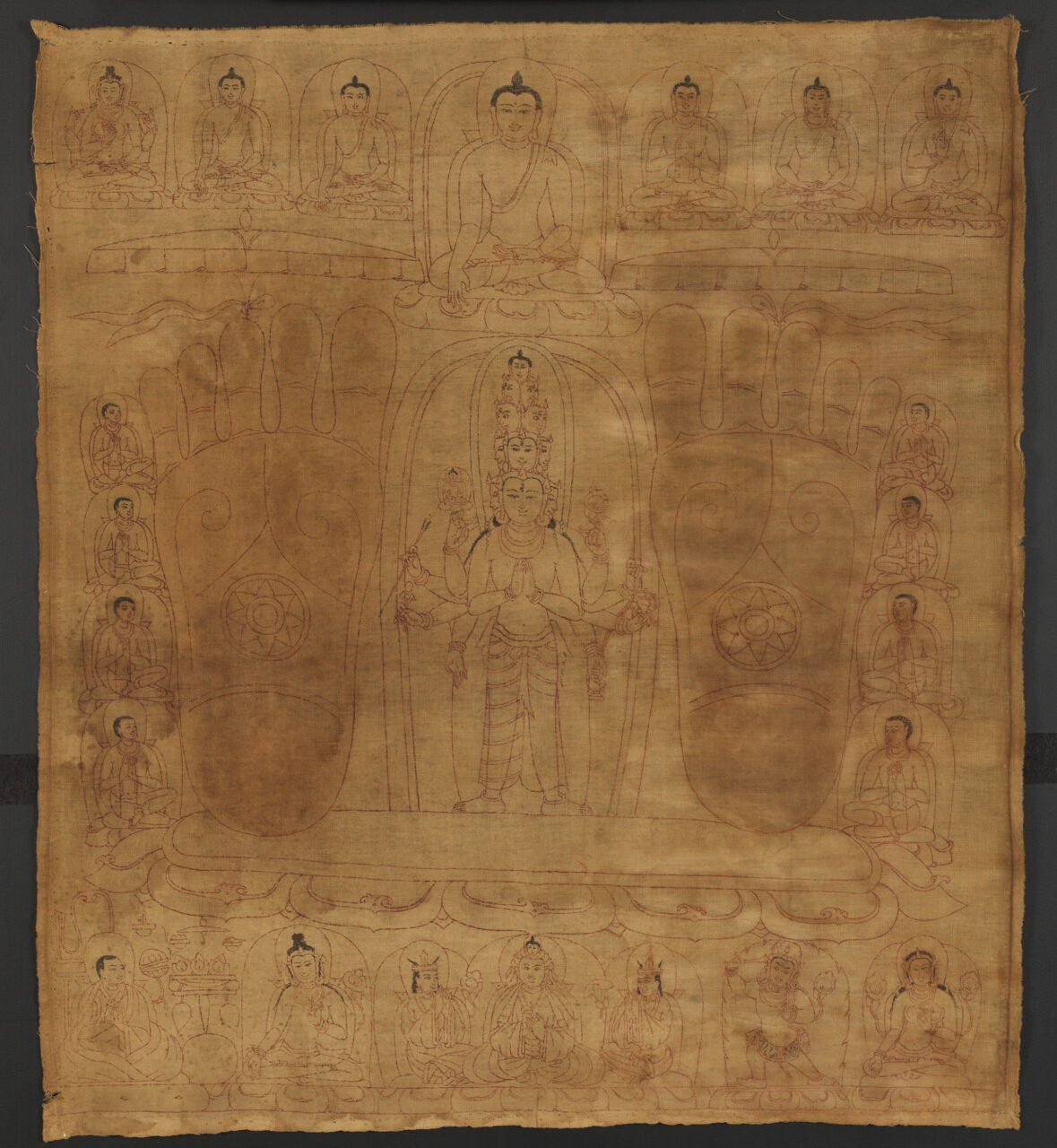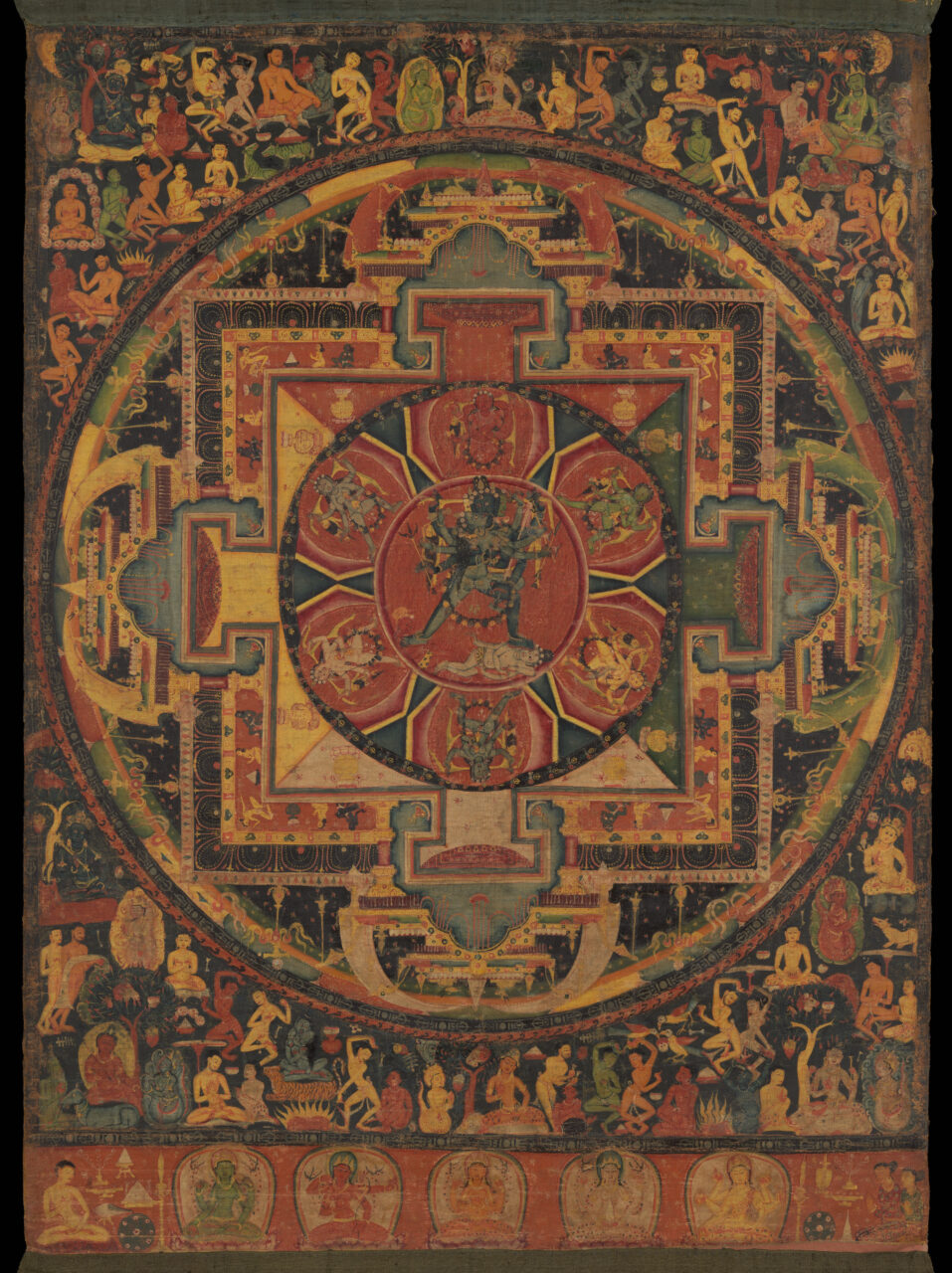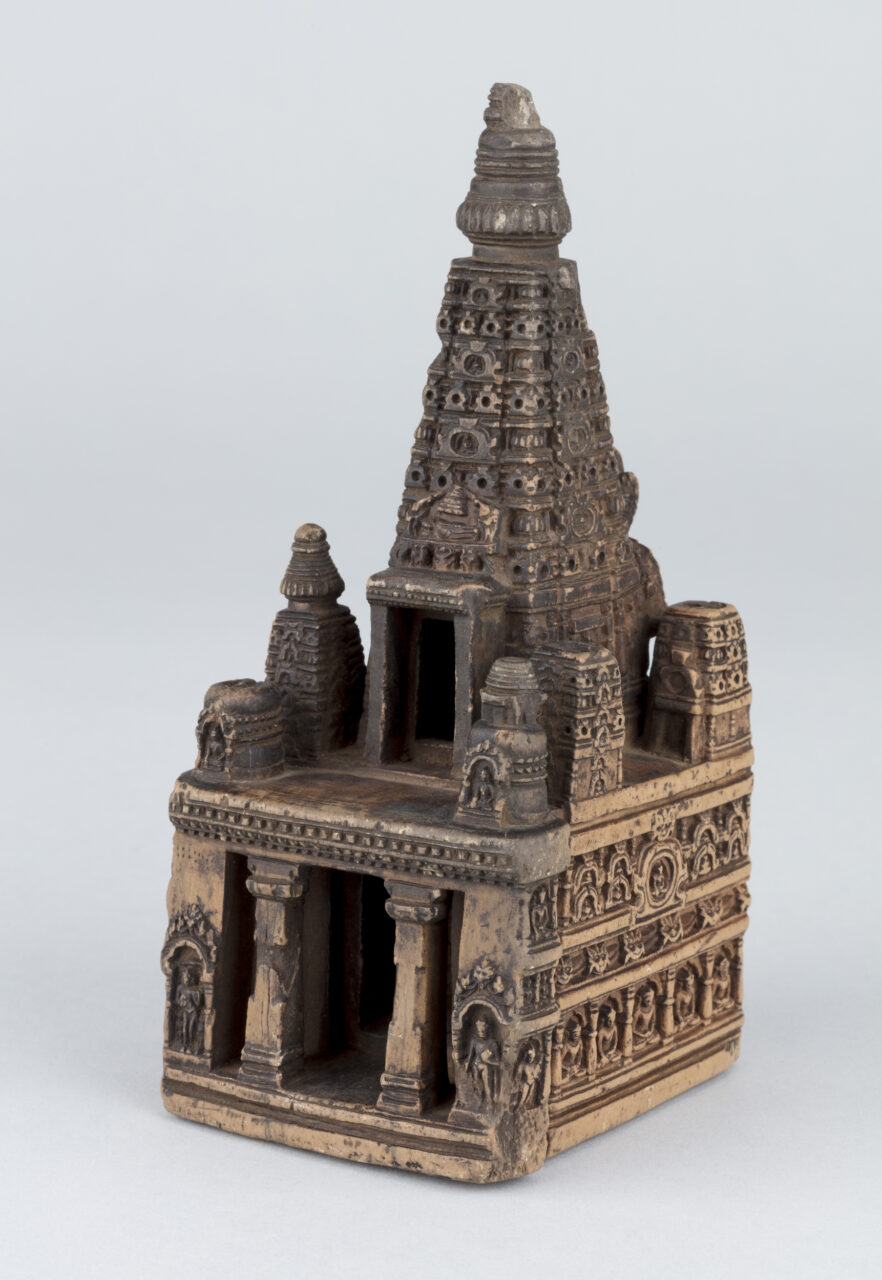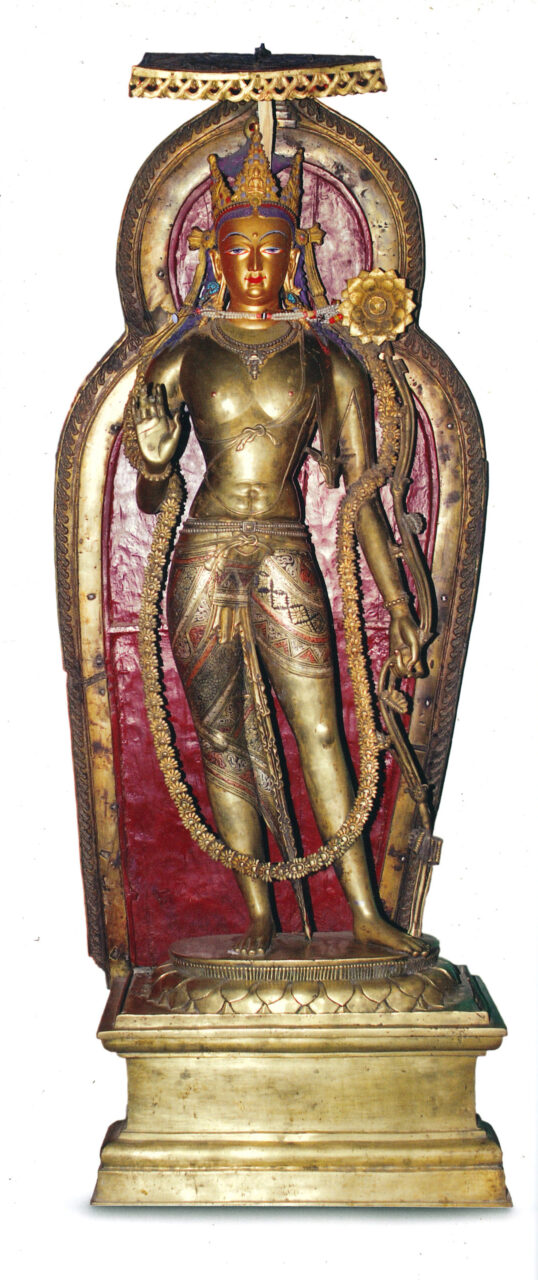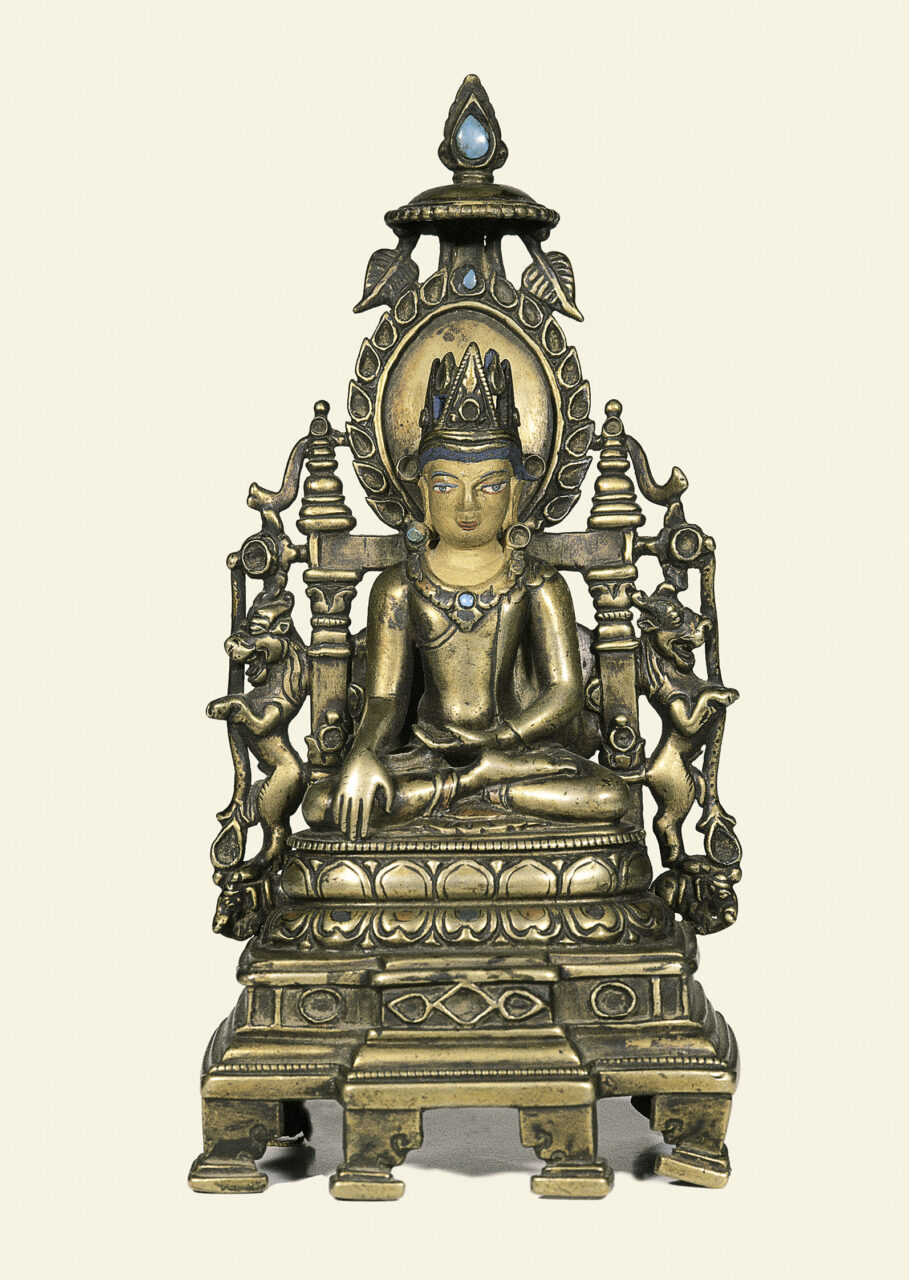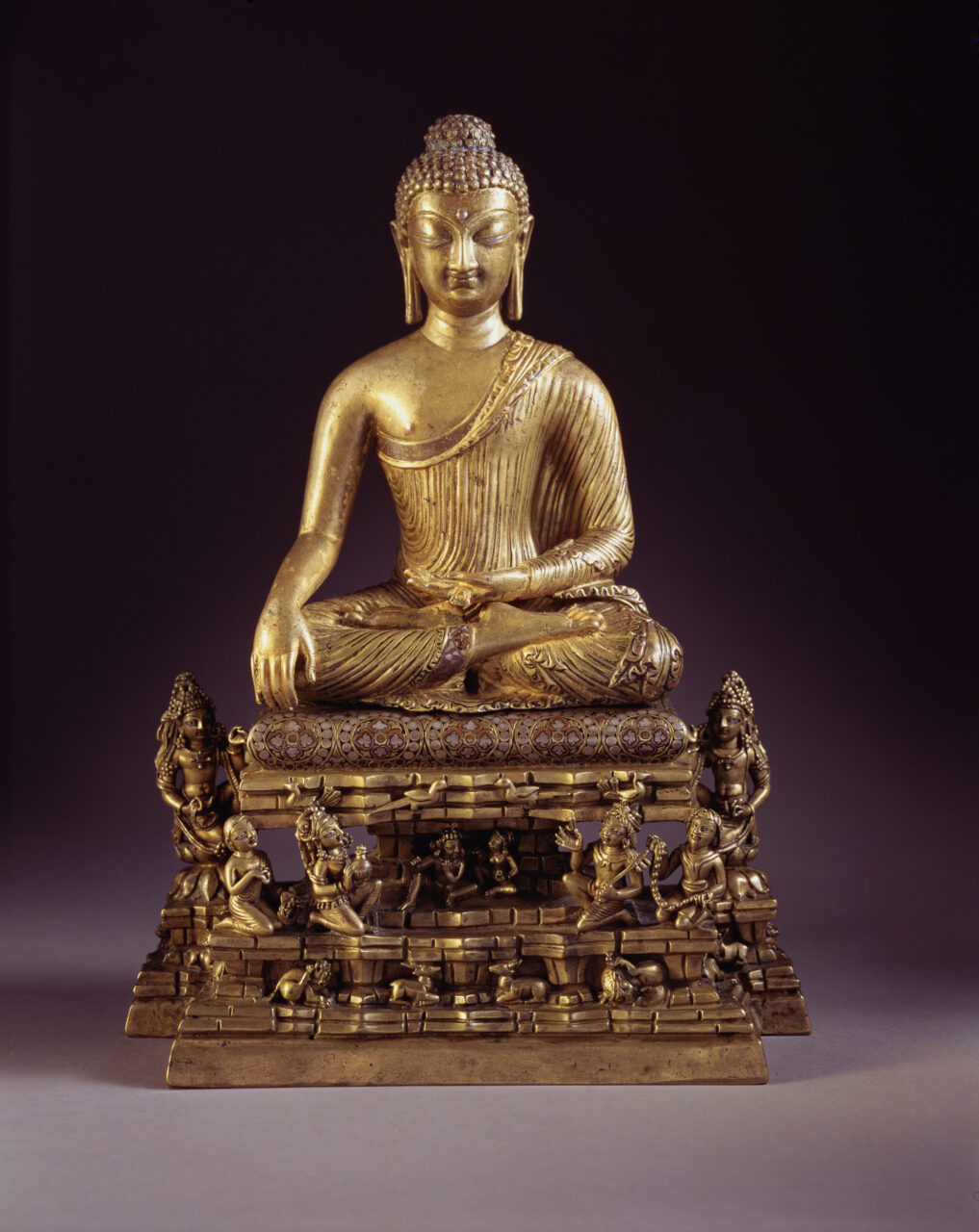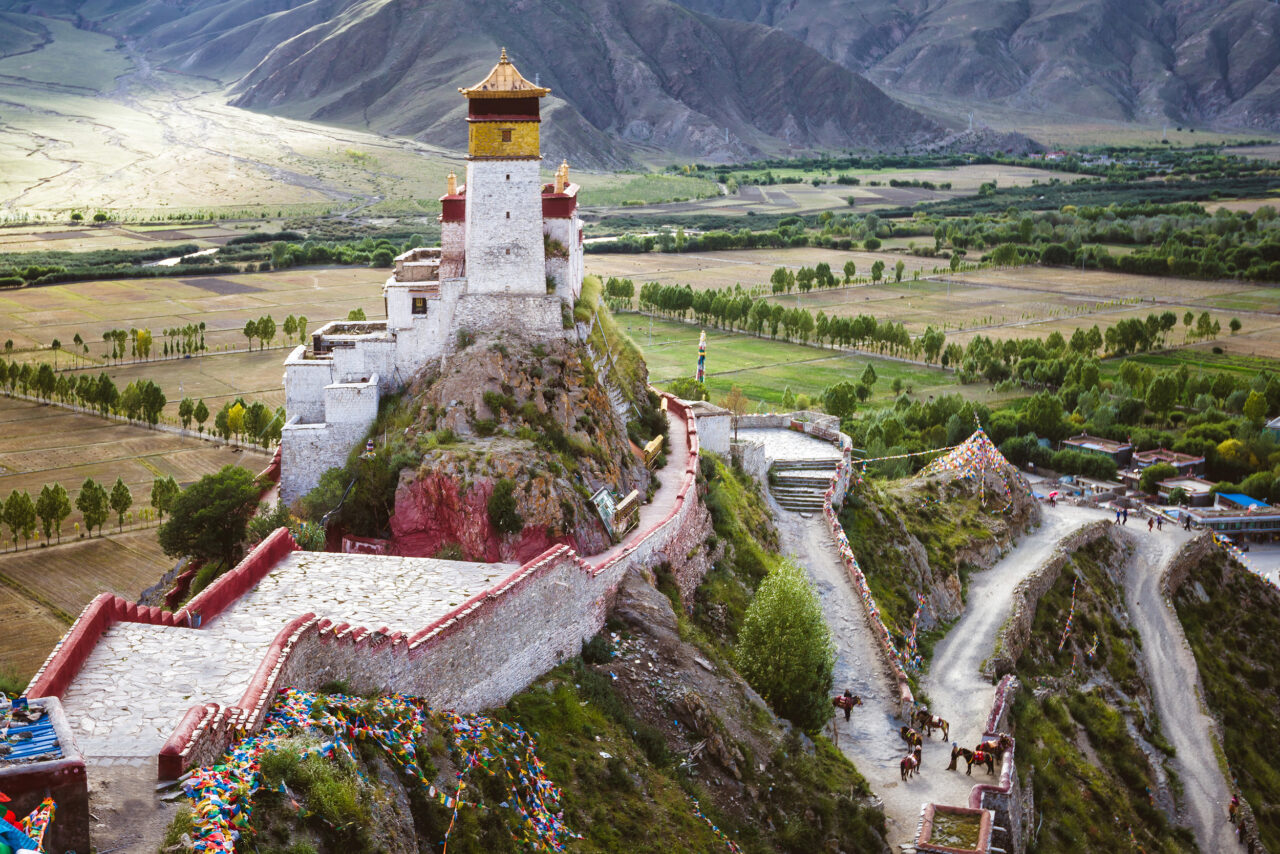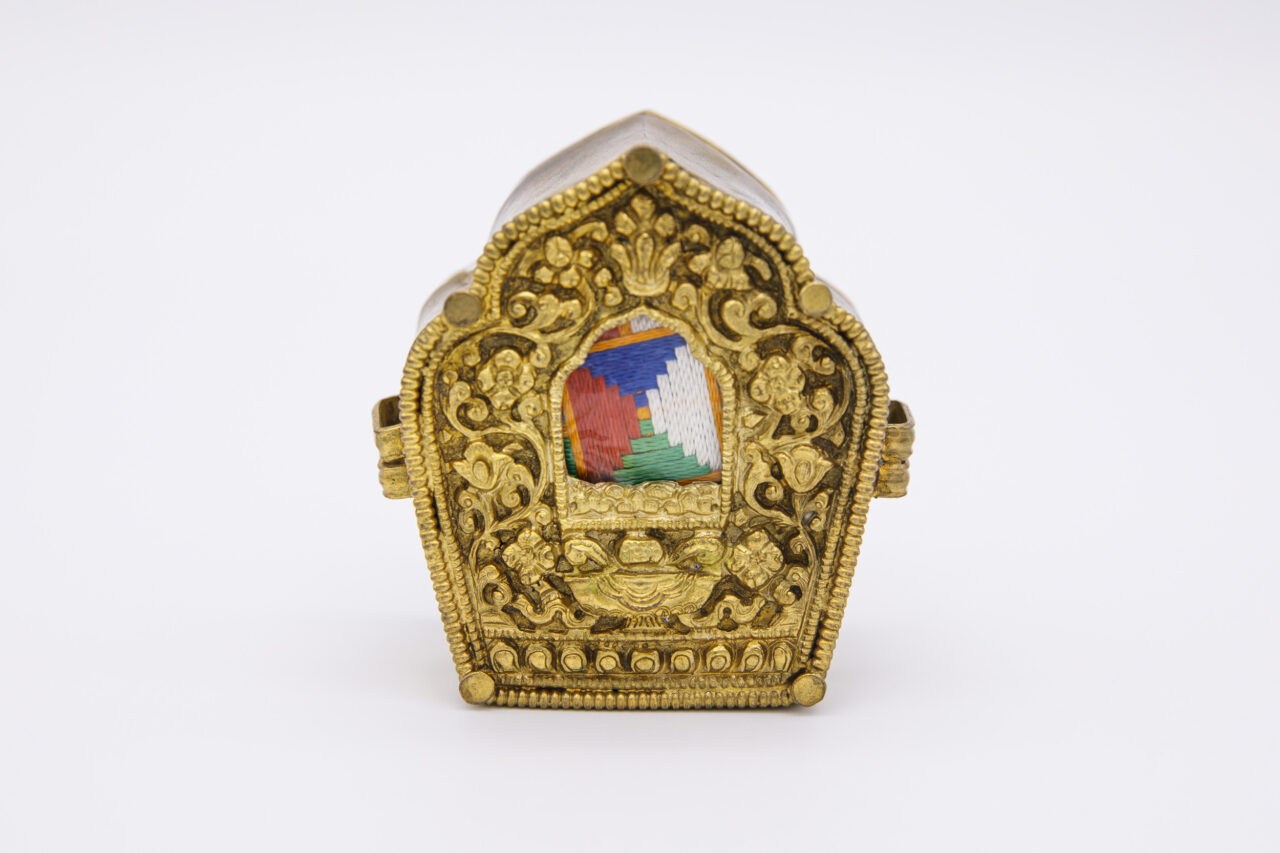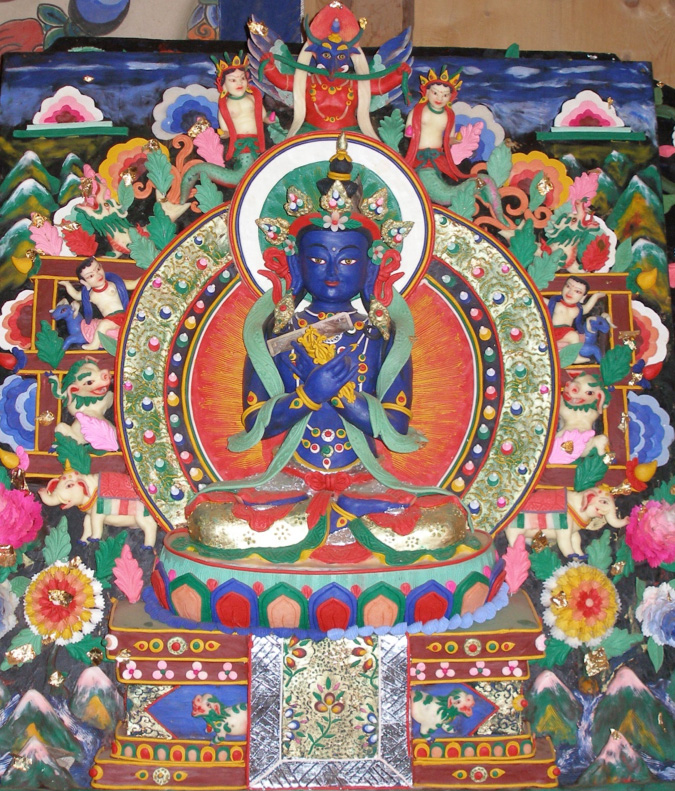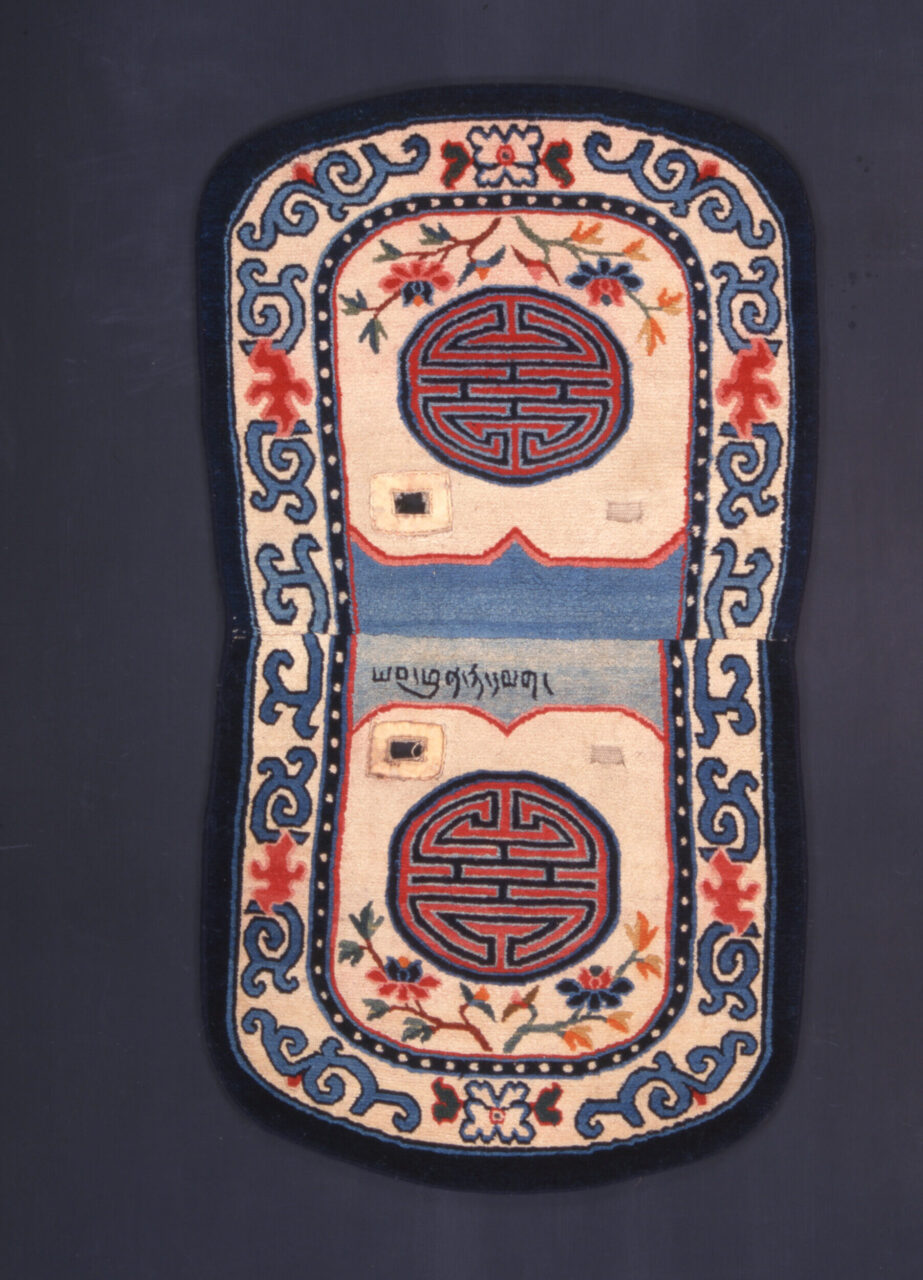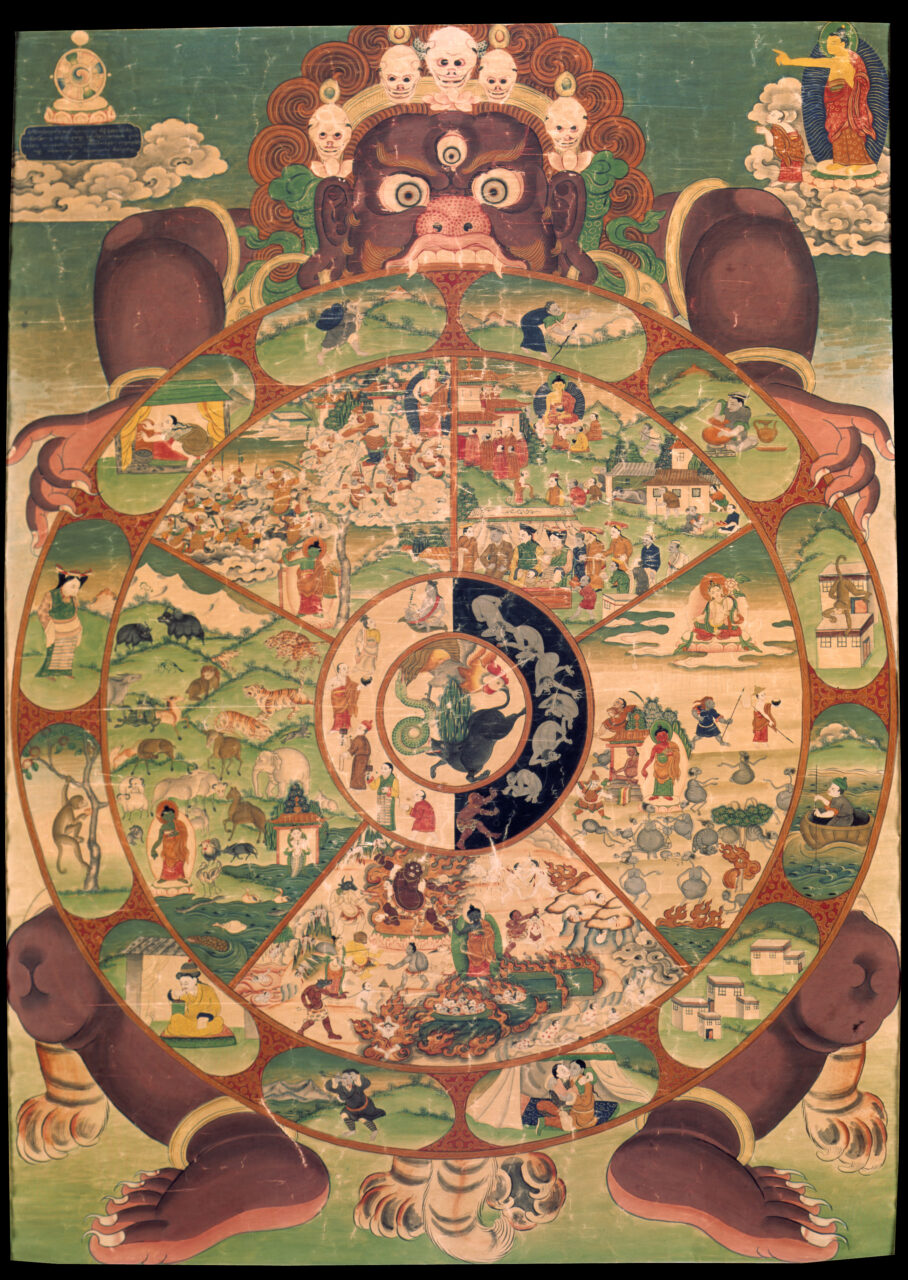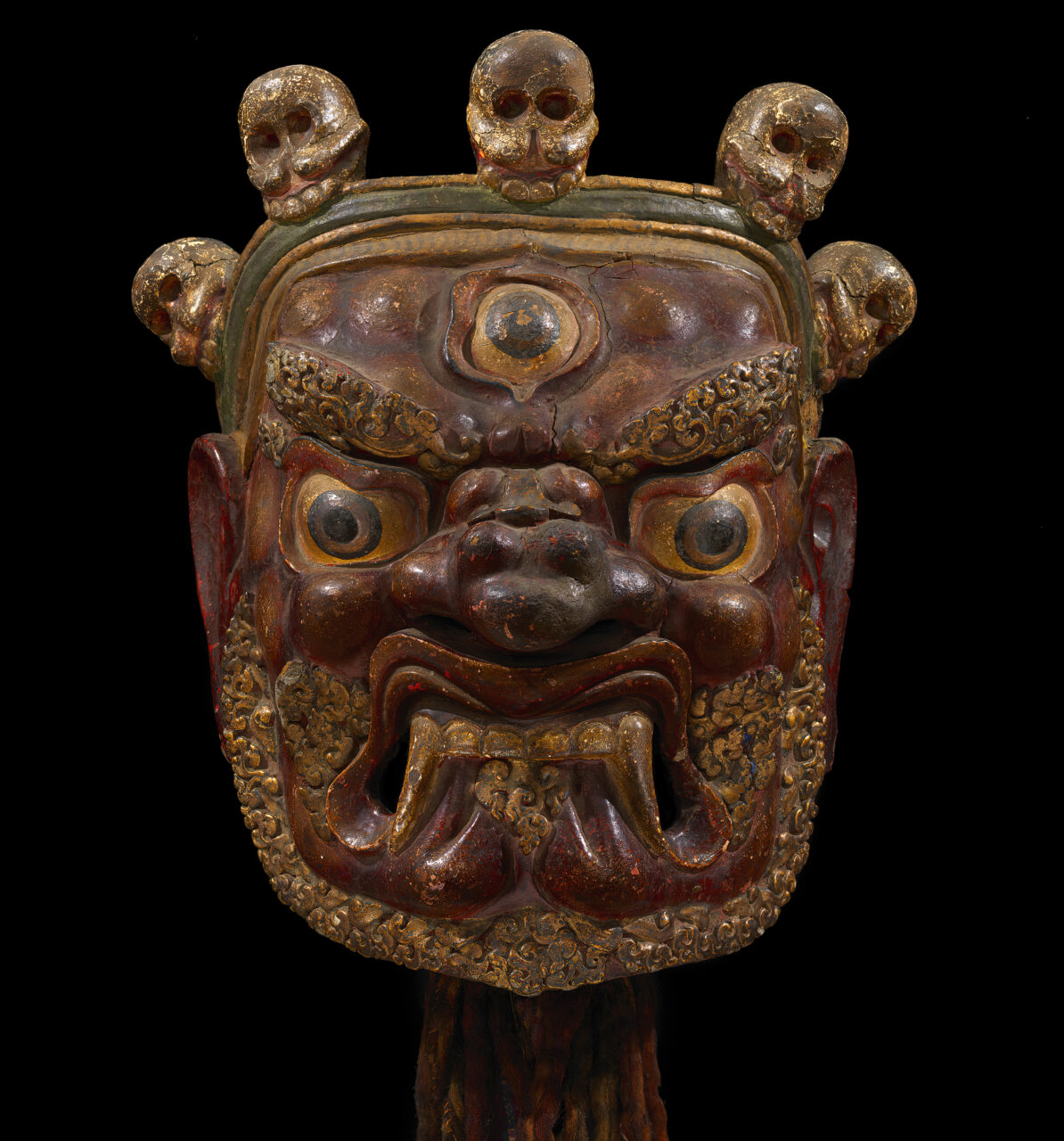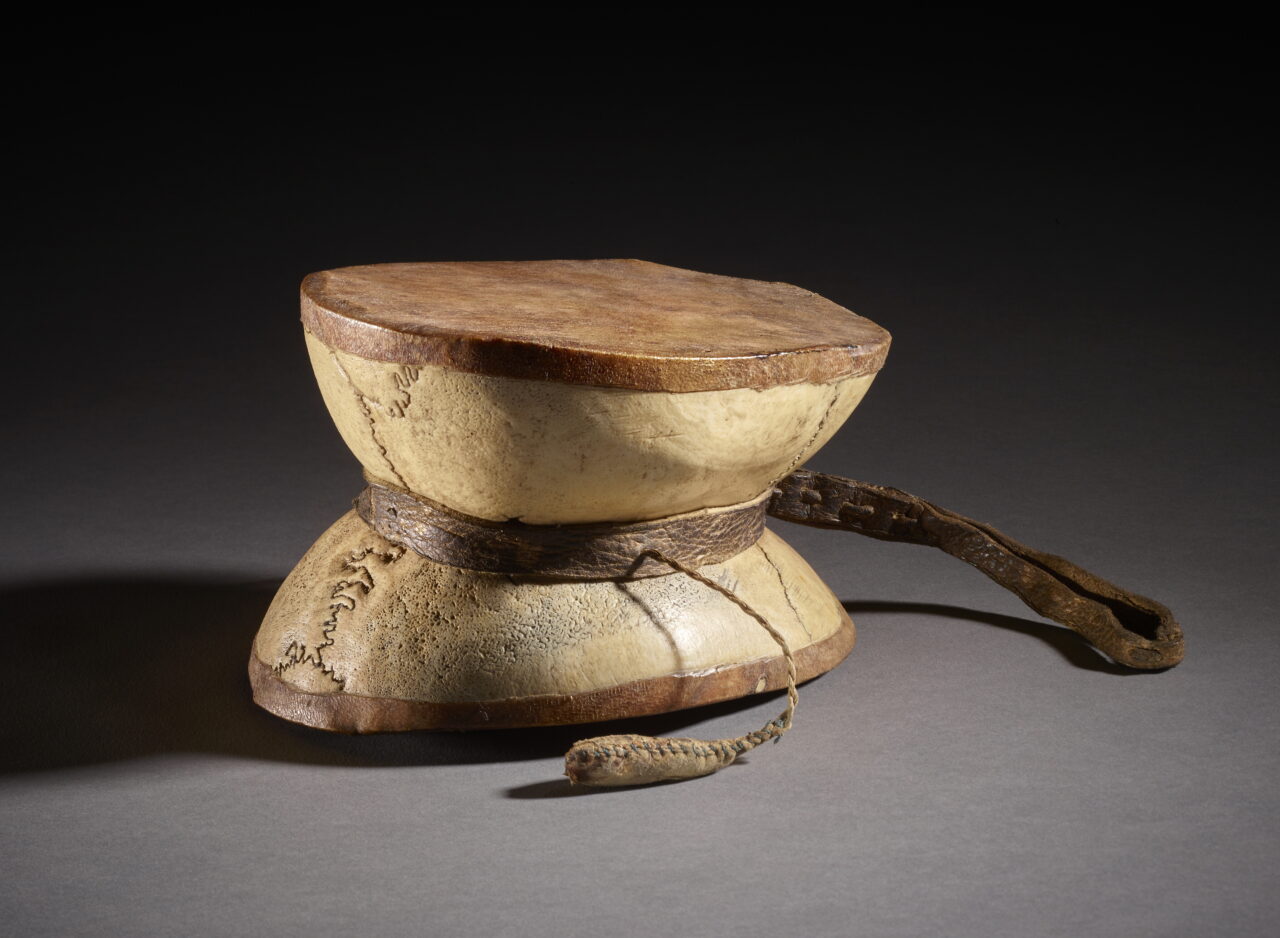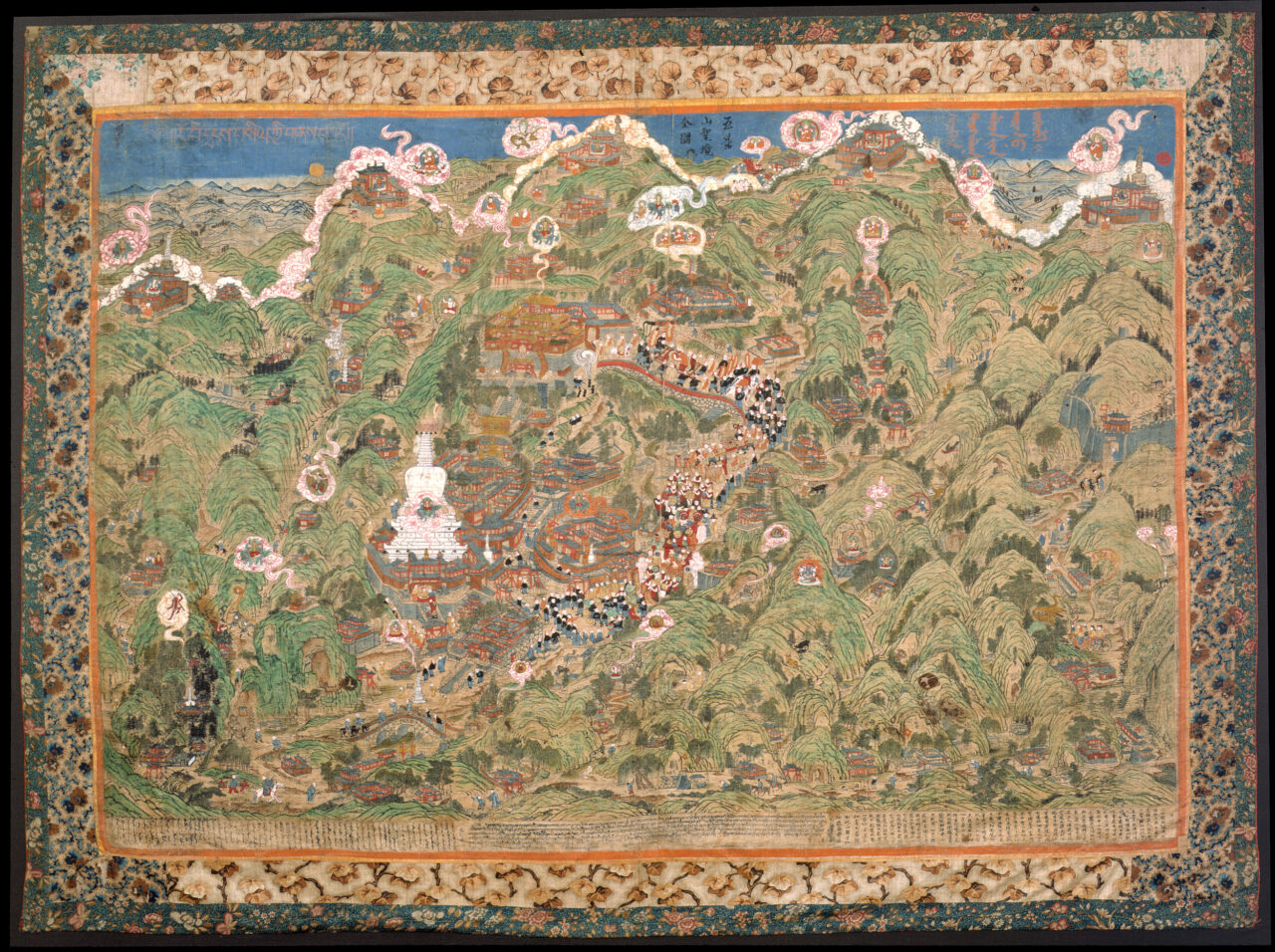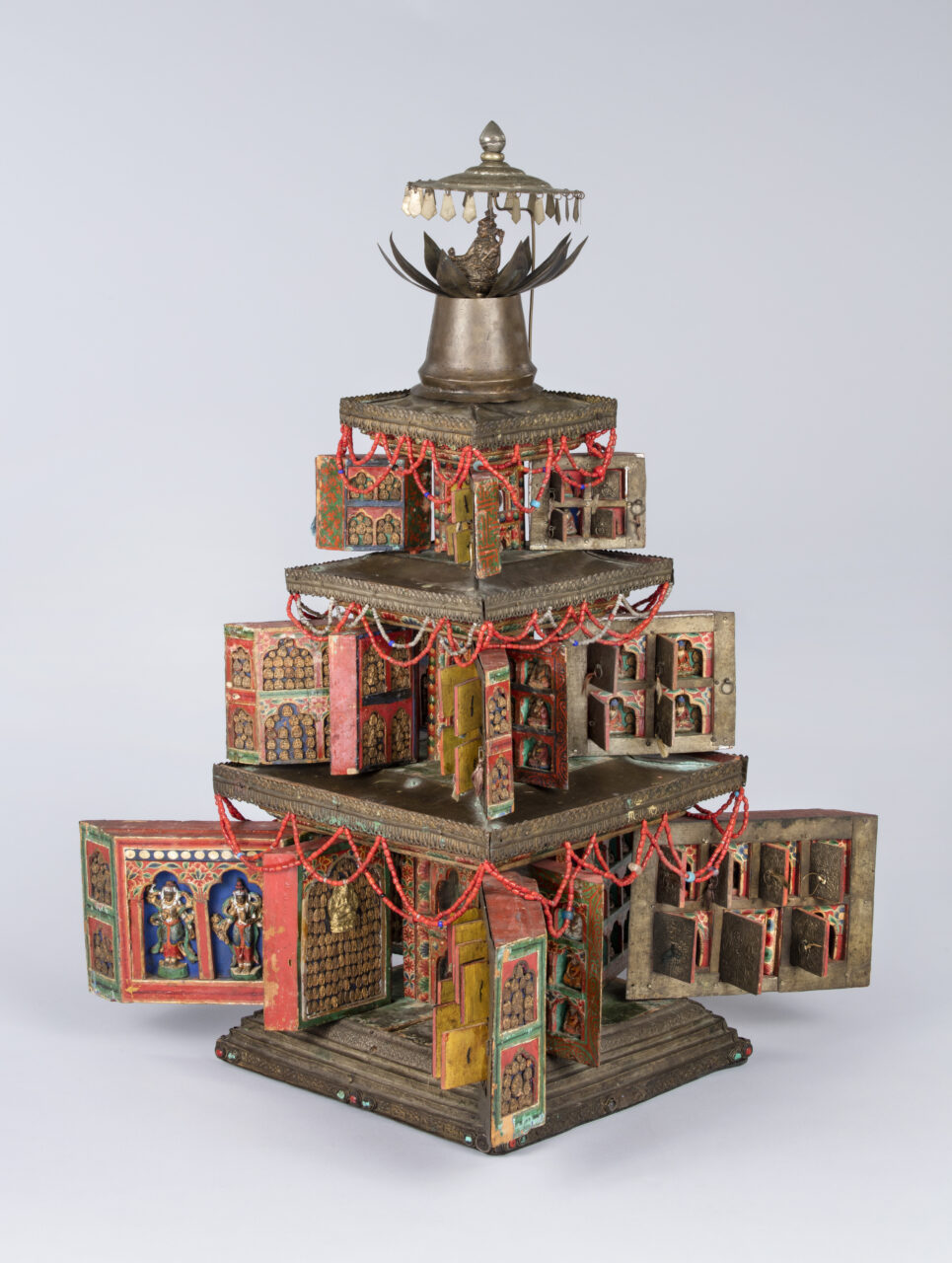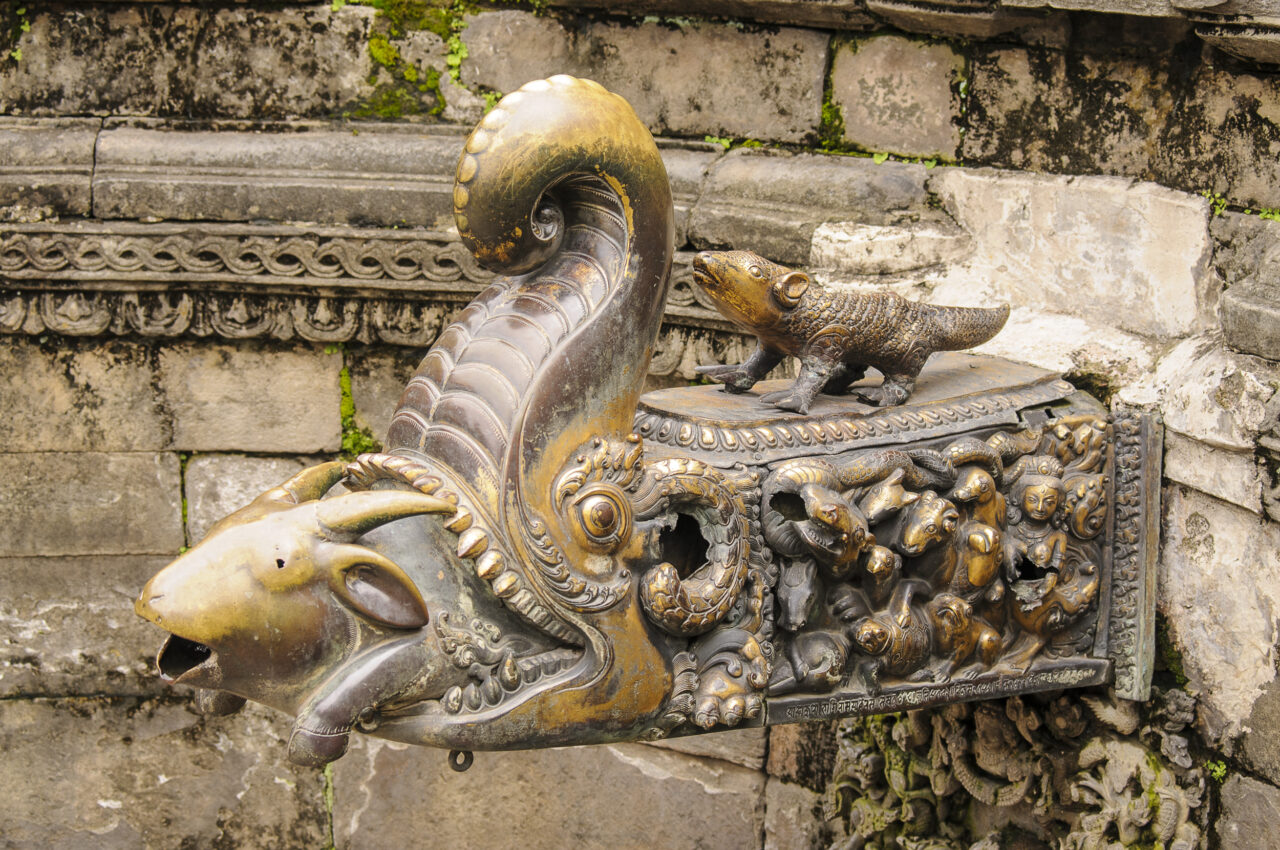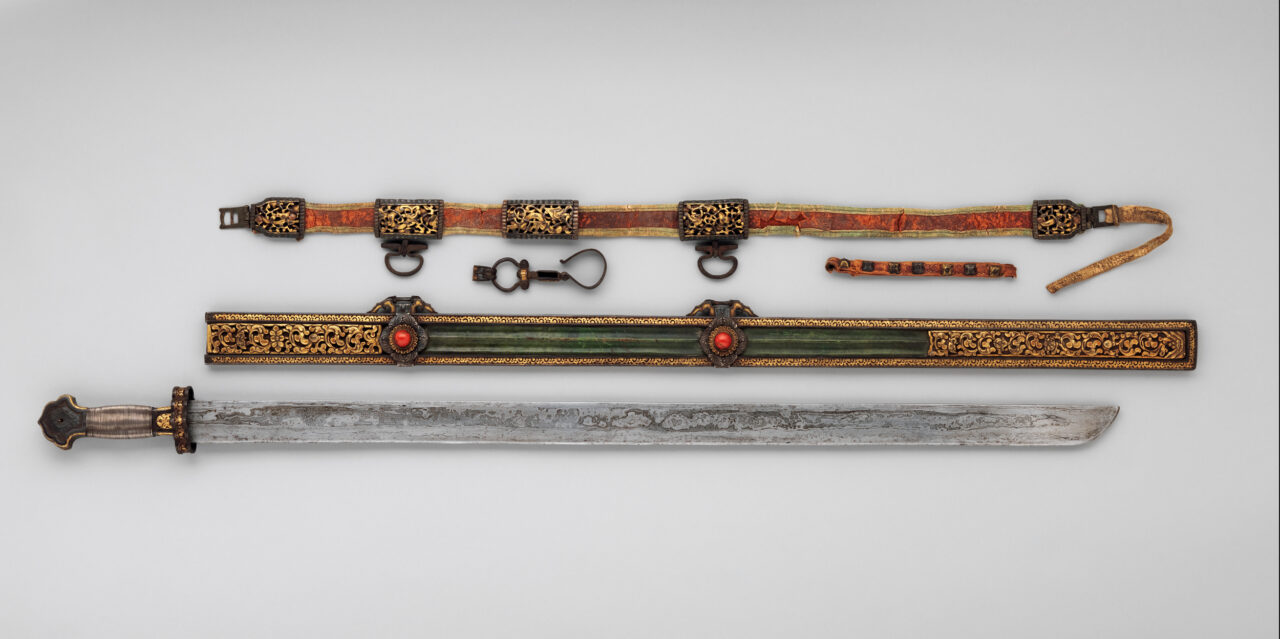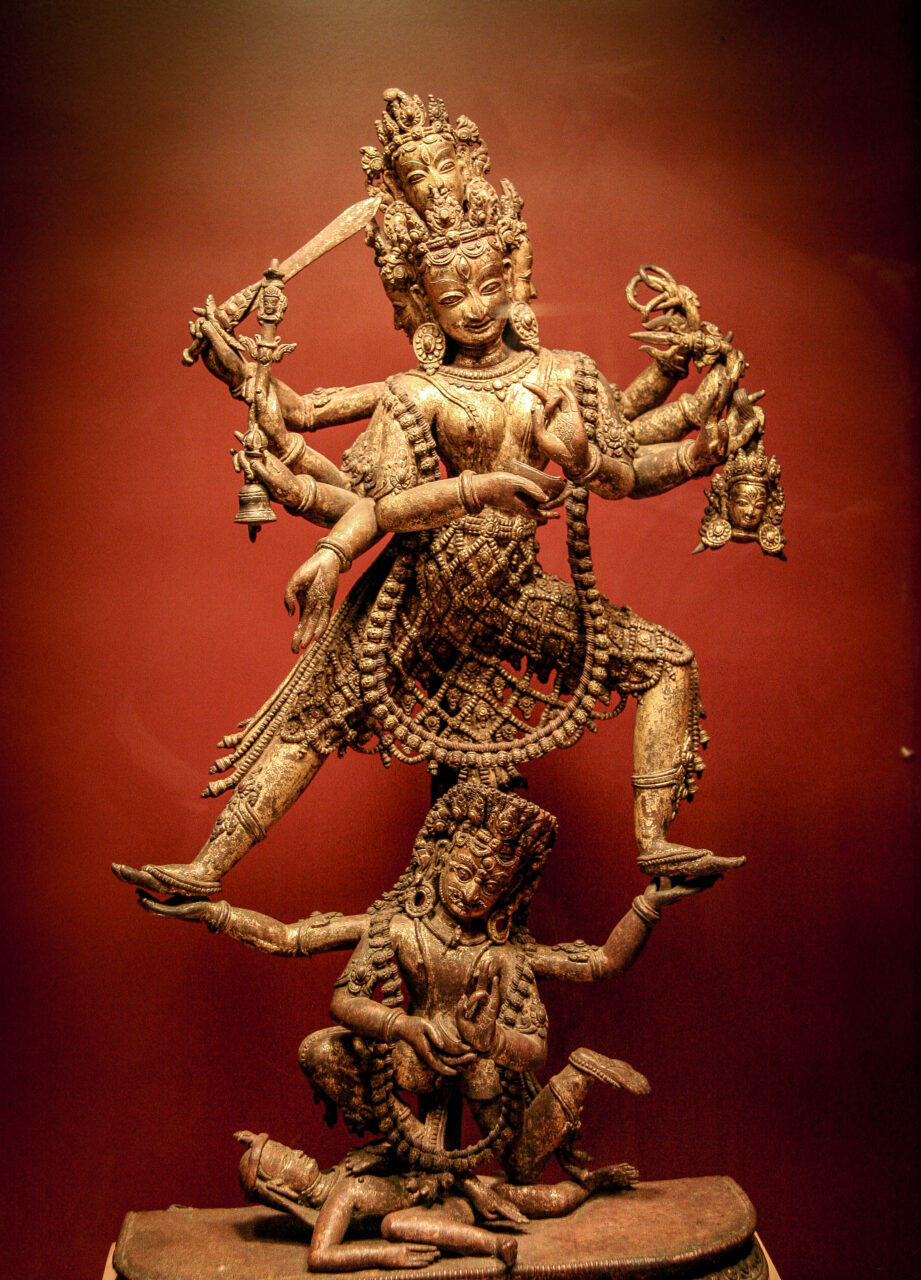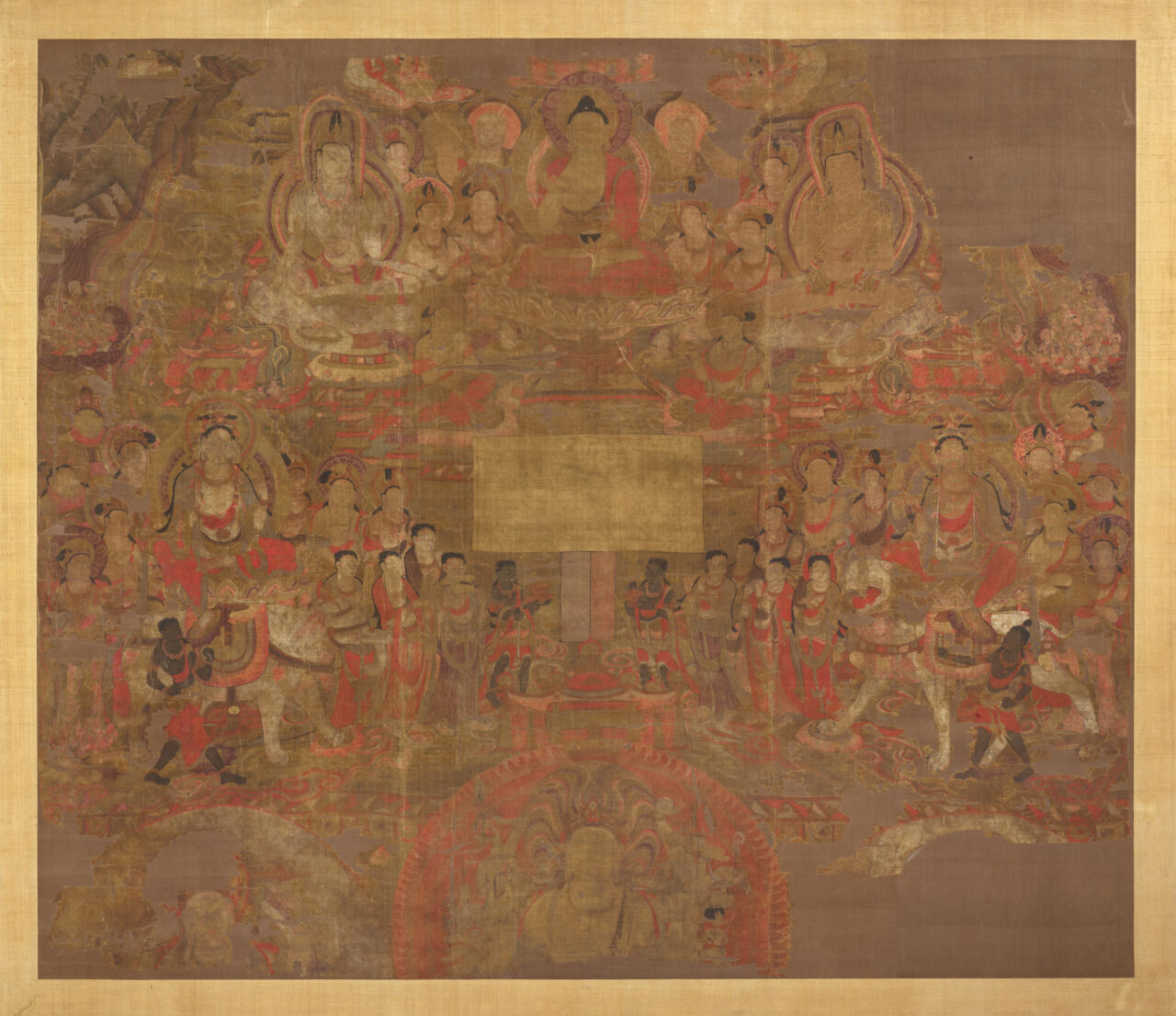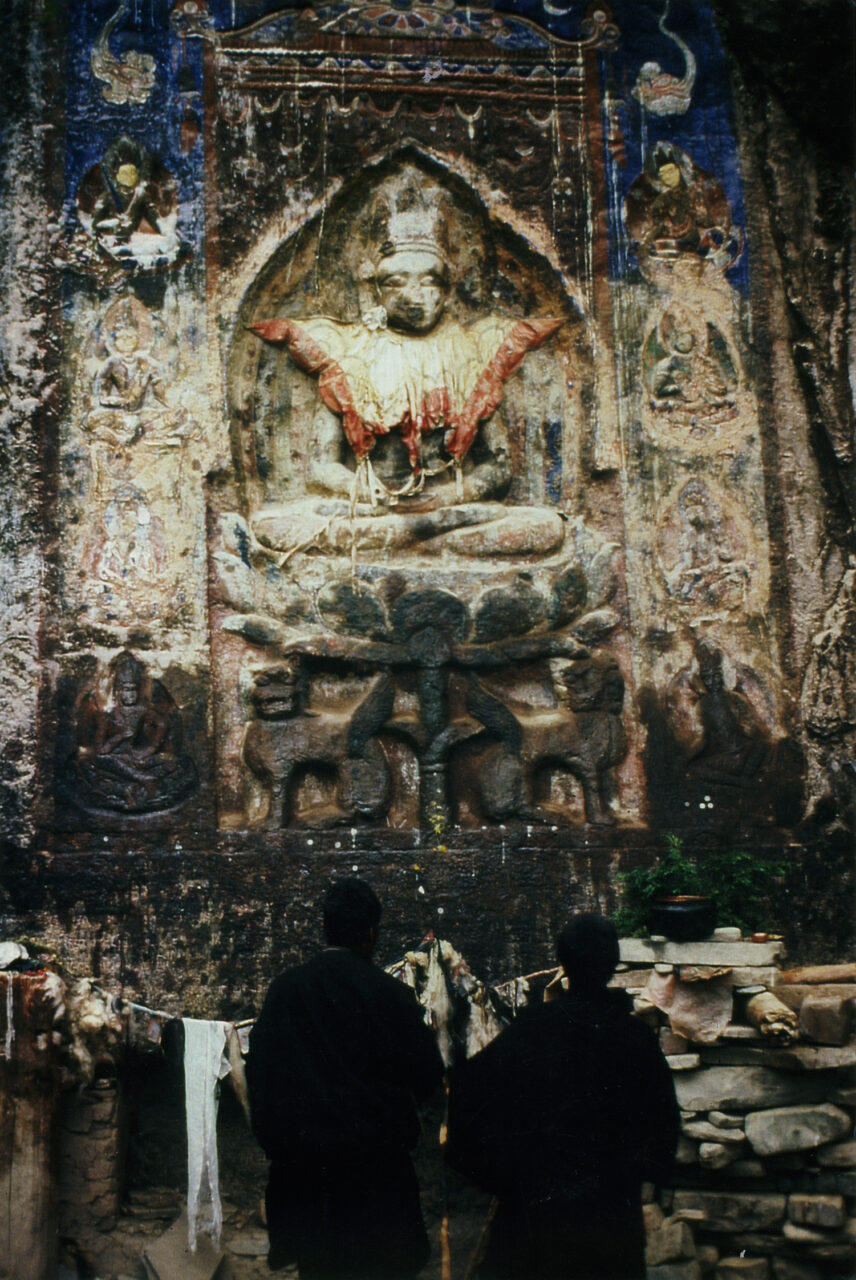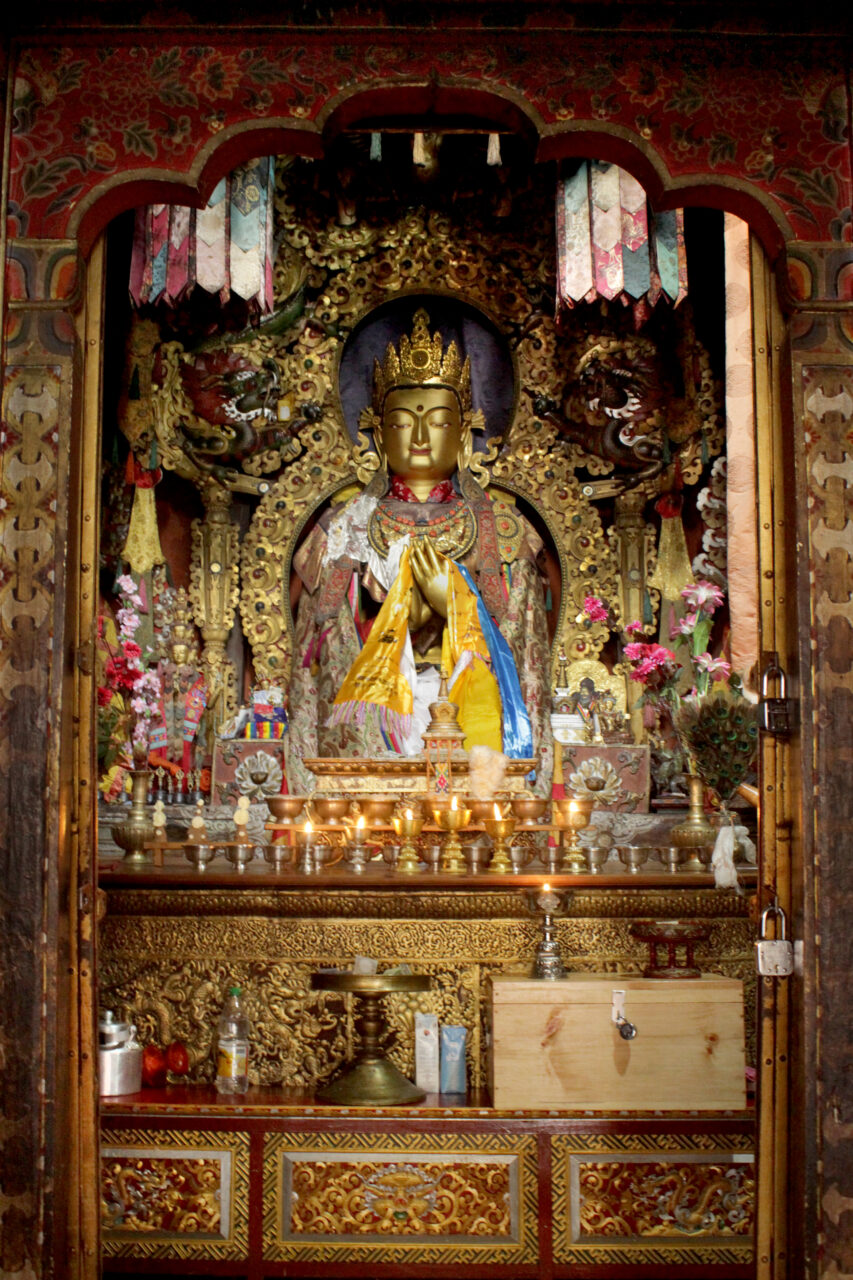Avalokiteshvara, an embodiment of compassion, is a powerful bodhisattva, worshiped all across the Buddhist world. Avalokiteshvara is part of the very origin myth of the Tibetan people, and seen as the protector deity of Tibet. Many Tibetans believe that the emperor Songtsen Gampo, the Karmapas, and Dalai Lamas are all emanations of Avalokiteshvara. A special Avalokiteshvara image, the Pakpa Lokeshvara, is enshrined at the Potala Palace in Lhasa. In India and Tibet, Avalokiteshvara is understood as male, while in East Asian Buddhism, Avalokiteshvara is often thought of as female, and is known by the Chinese name Guanyin. Avalokiteshvara is recognizable in the Tibetan tradition by the lotus he holds, the image of Buddha Amitabha in his crown, and antelope skin over his shoulder.
Different Asian religious traditions posit different types of divine beings. Hindus generally believe in an all-encompassing God-like being, called Brahman. They also believe in a variety of other gods (deva), including Brahma, Vishnu, and Shiva. Early Buddhists denied the existence of a single, all-powerful creator god. Nevertheless, they always recognized a variety of powerful spirits, like gandharvas and nagas. Mahayana Buddhists came to see bodhisattvas as beings of enormous power, and buddhas themselves as cosmic beings with the ability to create entire universes. Buddhist and Bon traditions in Tibet worshiped a variety of other gods (Tib. lha), like the mountain gods, or gods of the land. According to Buddhist tradition, enlightened deities are seen as beyond the cycle of death and rebirth, whereas gods (including Hindu gods) are not.
In Nepal, a jatra is a festival procession, in which an image of a deity is carried through the streets on elaborate chariots, often accompanied by music, dance, and offering rituals. Important jatras include those for Indra, Kumari, and Bunga Dya.
The monsoon is the yearly rain season in the Indian Subcontinent and the Himalayas. Depending on the area, the monsoon lasts roughly from midsummer to late autumn. Monsoon is the main source of water for the Kathmandu Valley and central to agrarian and ritual life of the Newars.
The Newars are traditional inhabitants of the Kathmandu Valley of Nepal. The Newars speak a Tibeto-Burman language (Newari) and practice both Hinduism and Buddhism. The Newars are inheritors of one of the oldest and most sophisticated urban civilizations of the Himalayas, and Newar arts and artisans have been celebrated all across the Himalayan world since the Licchavi period.






